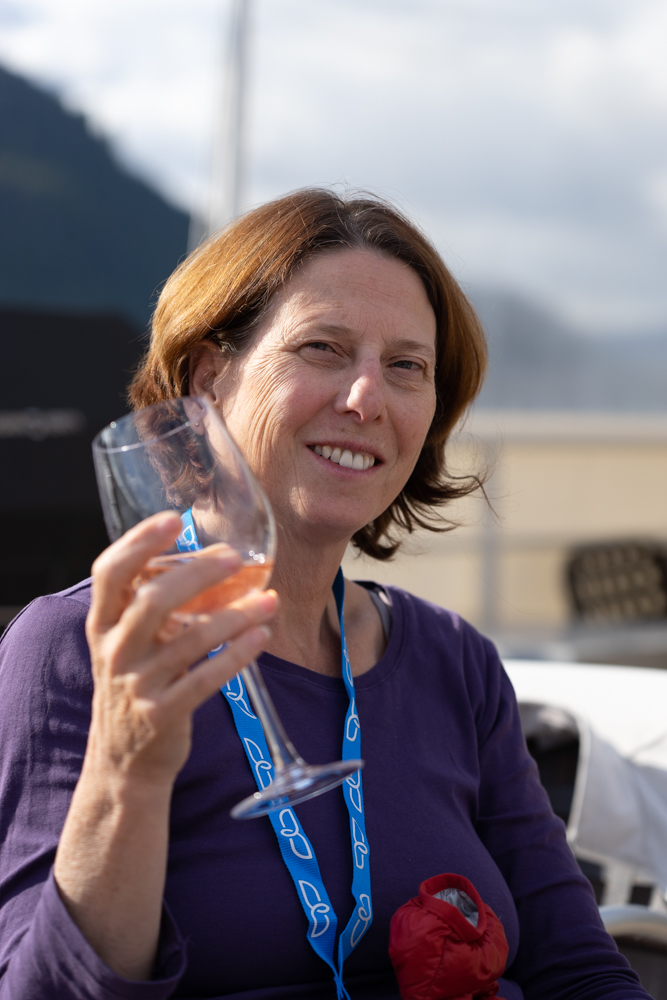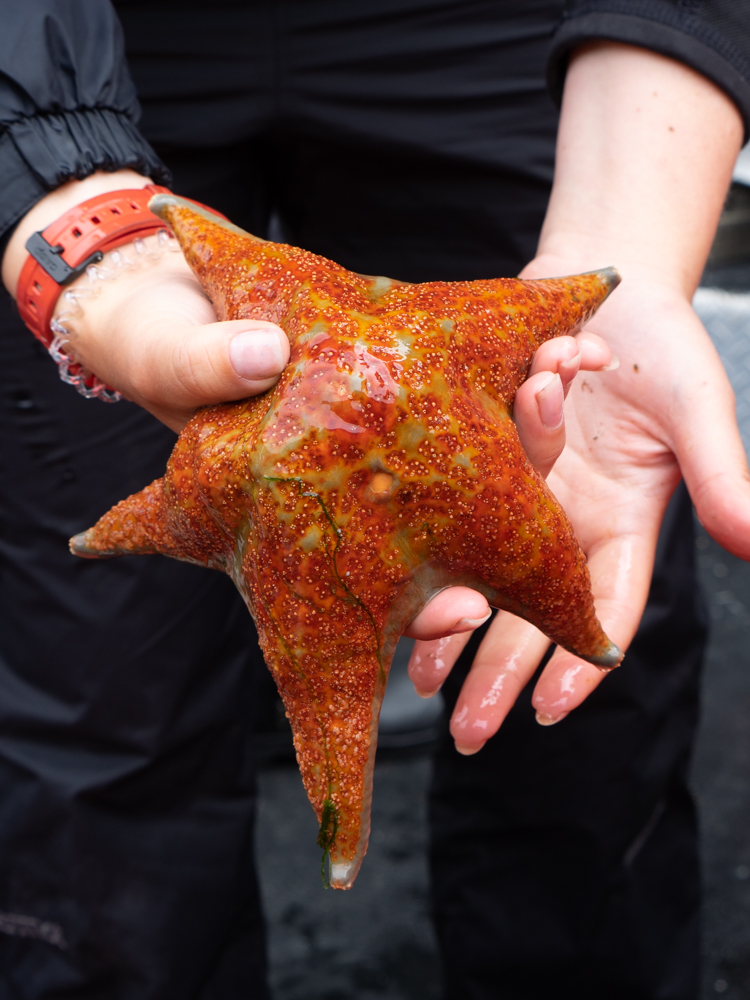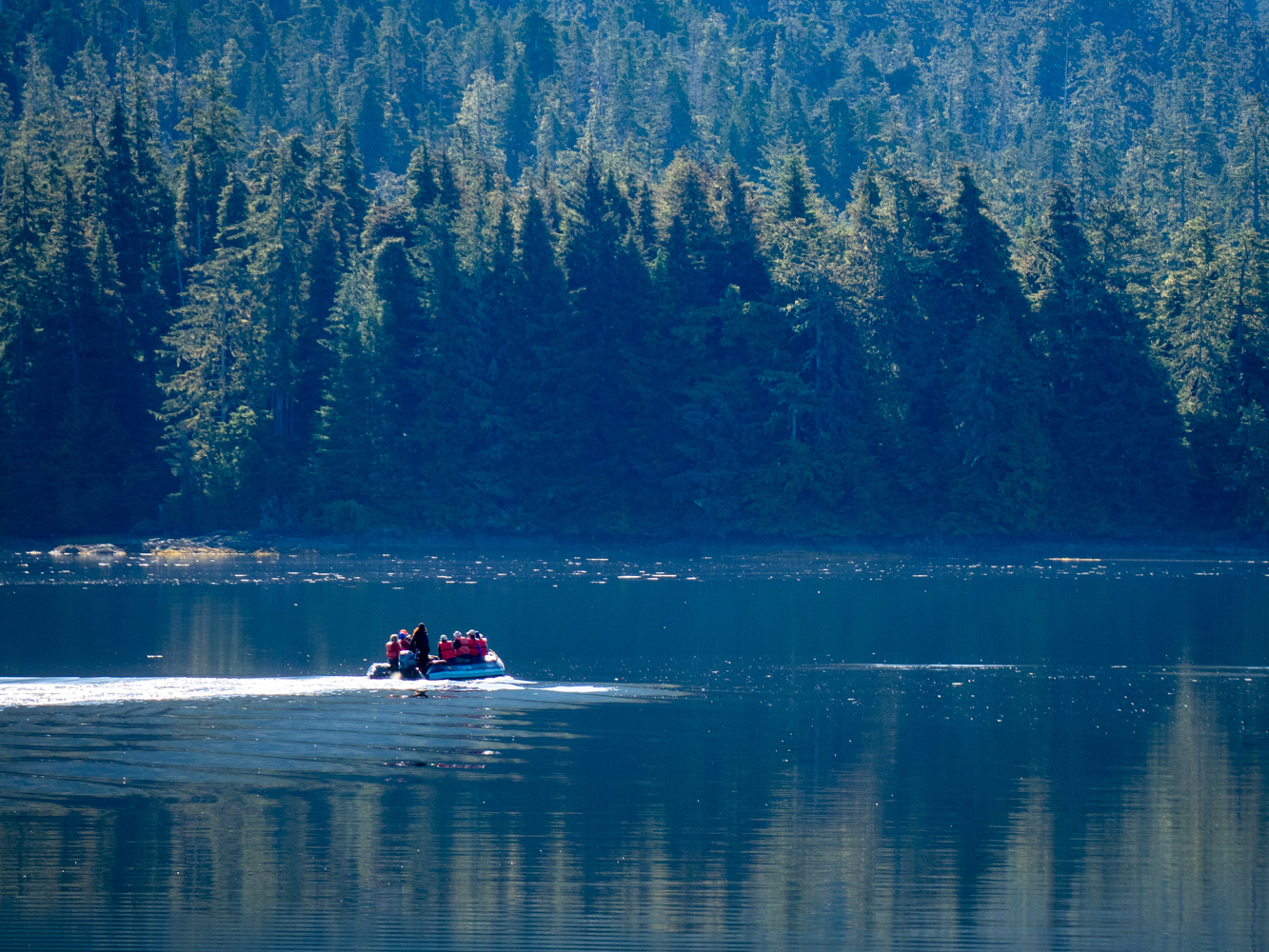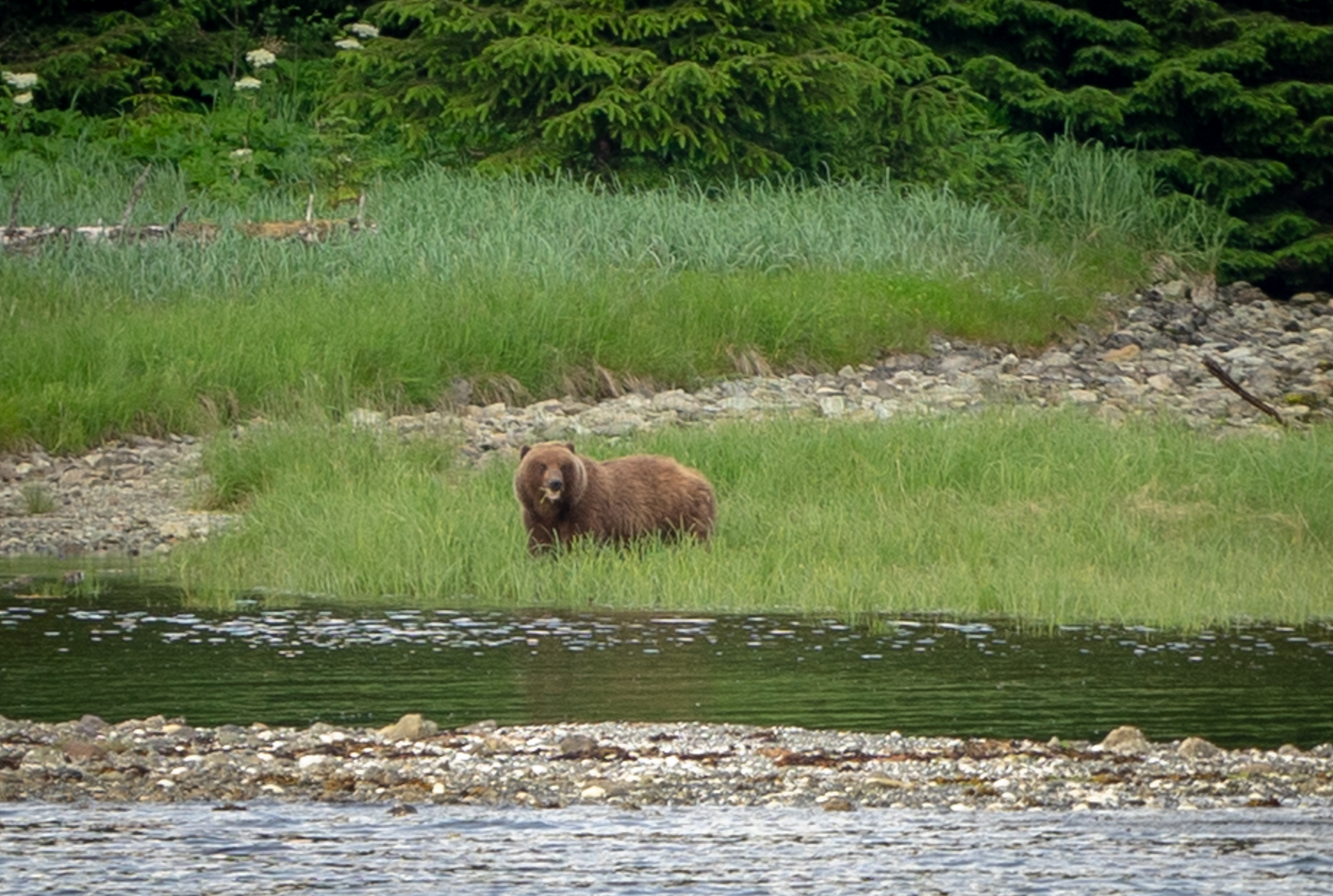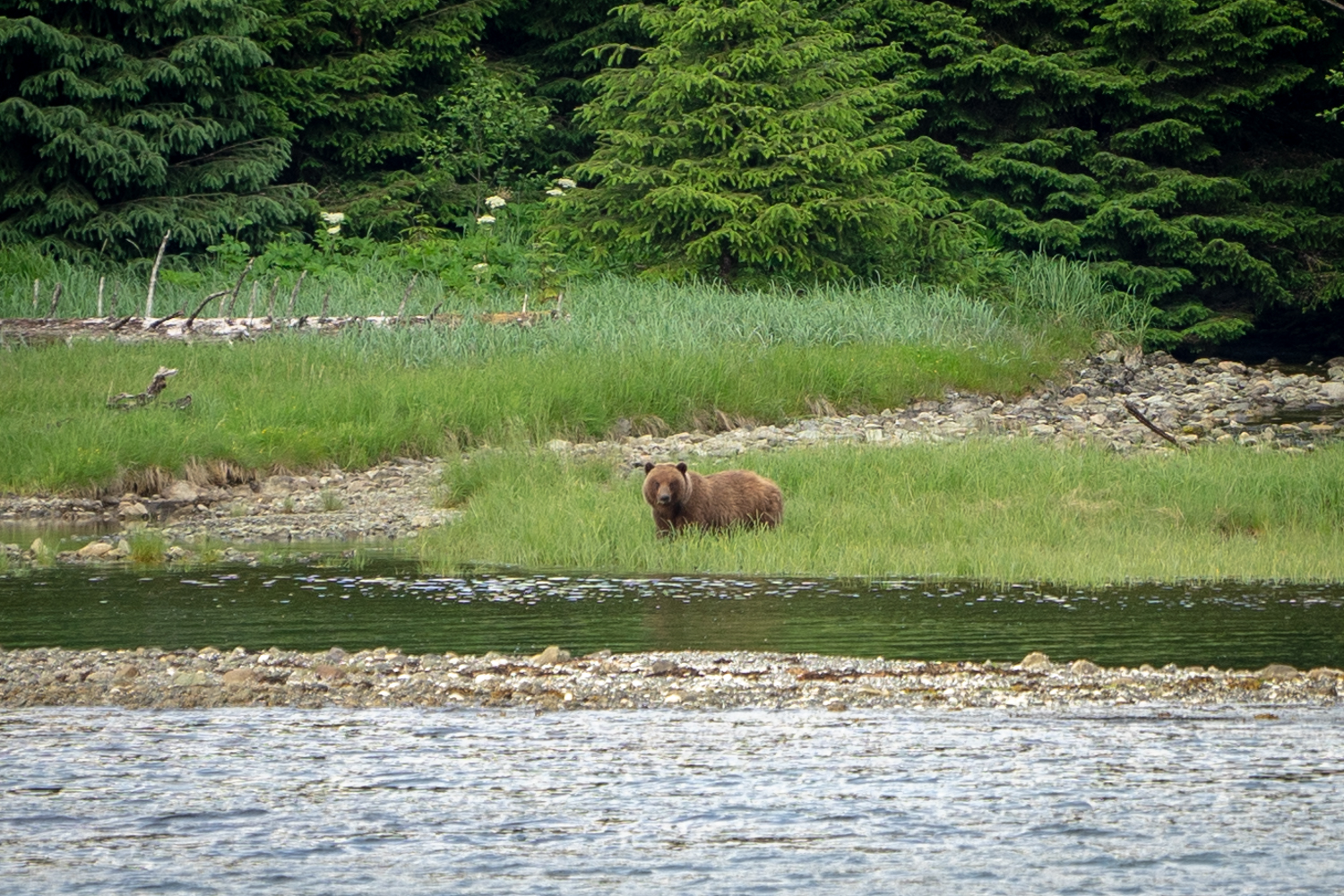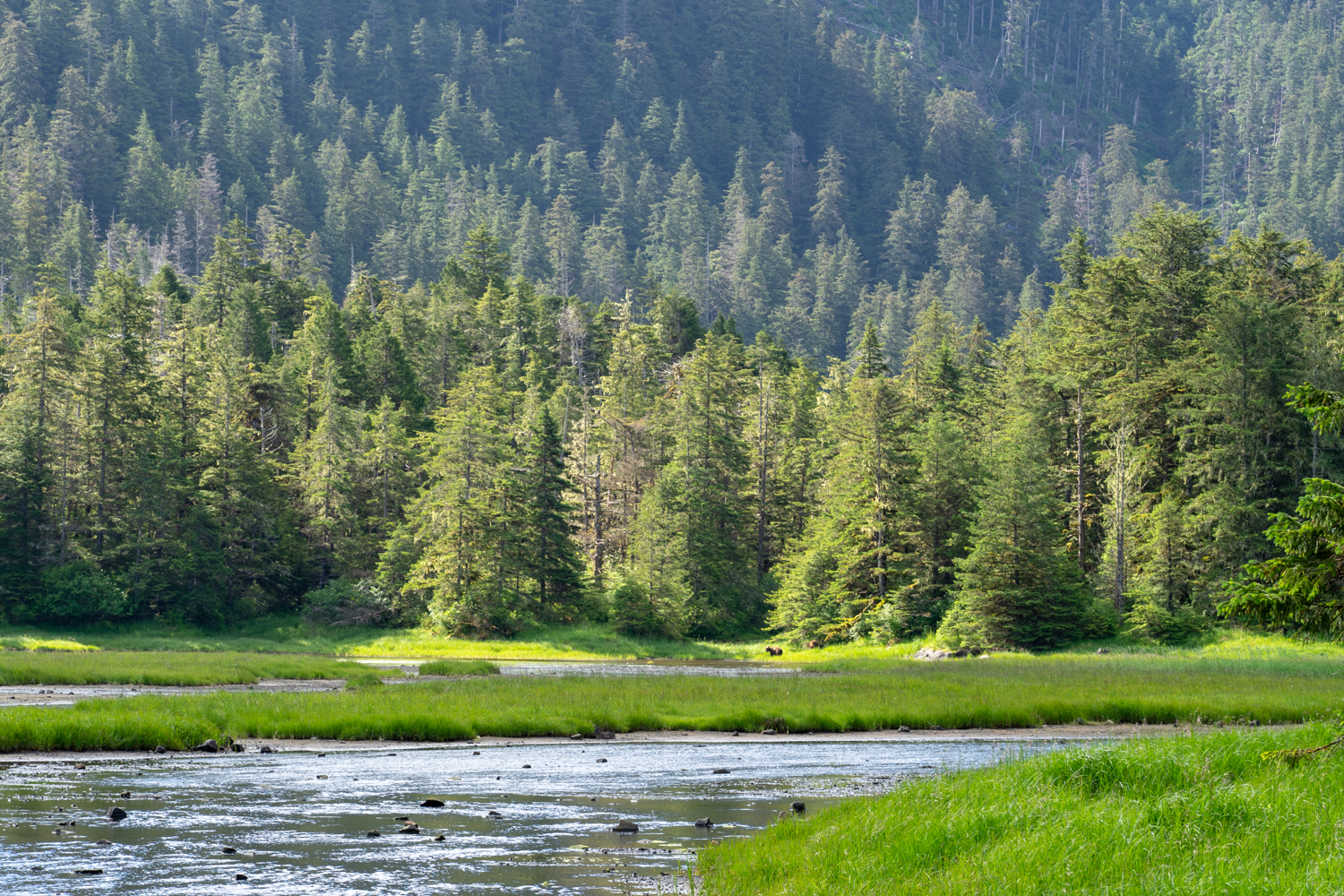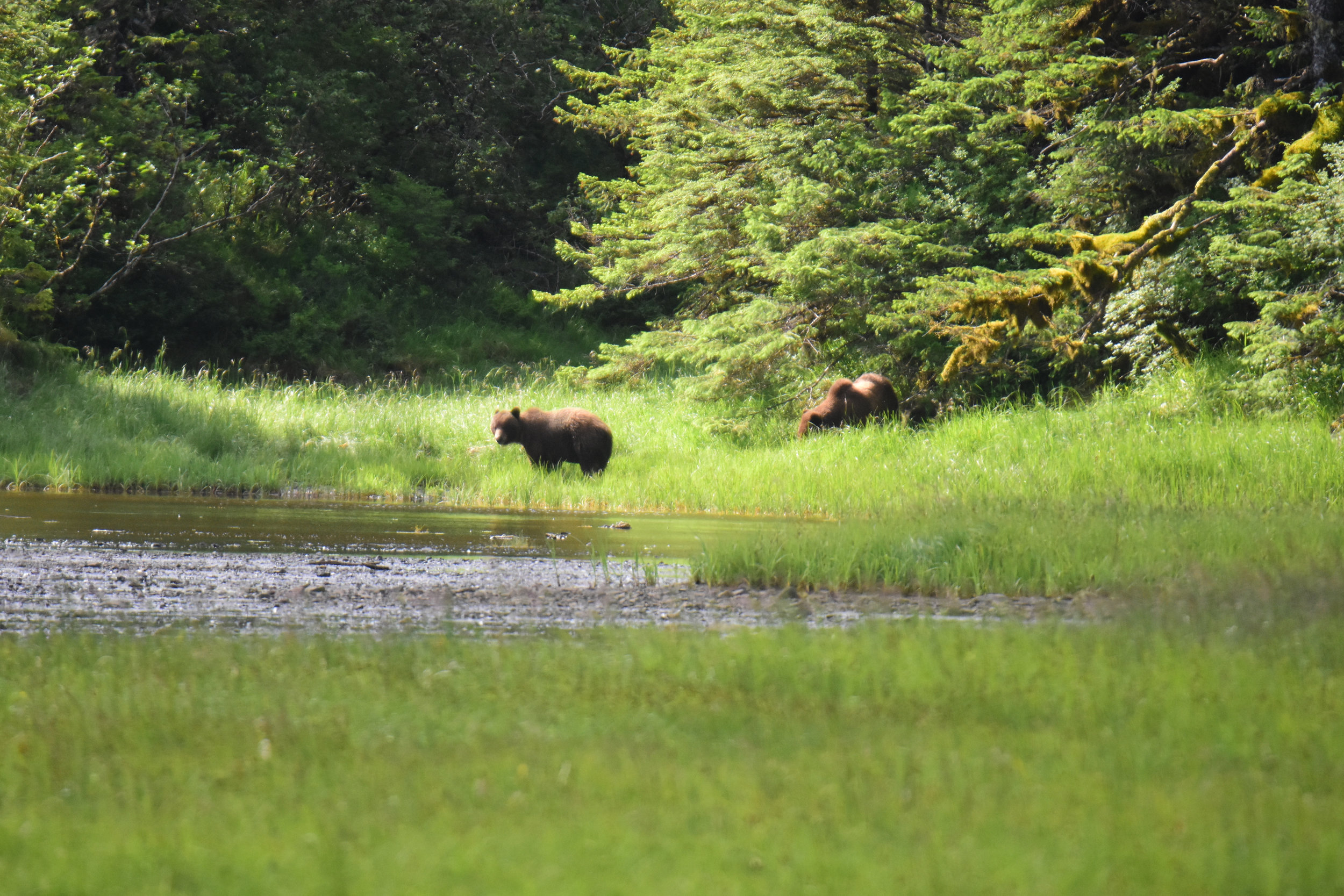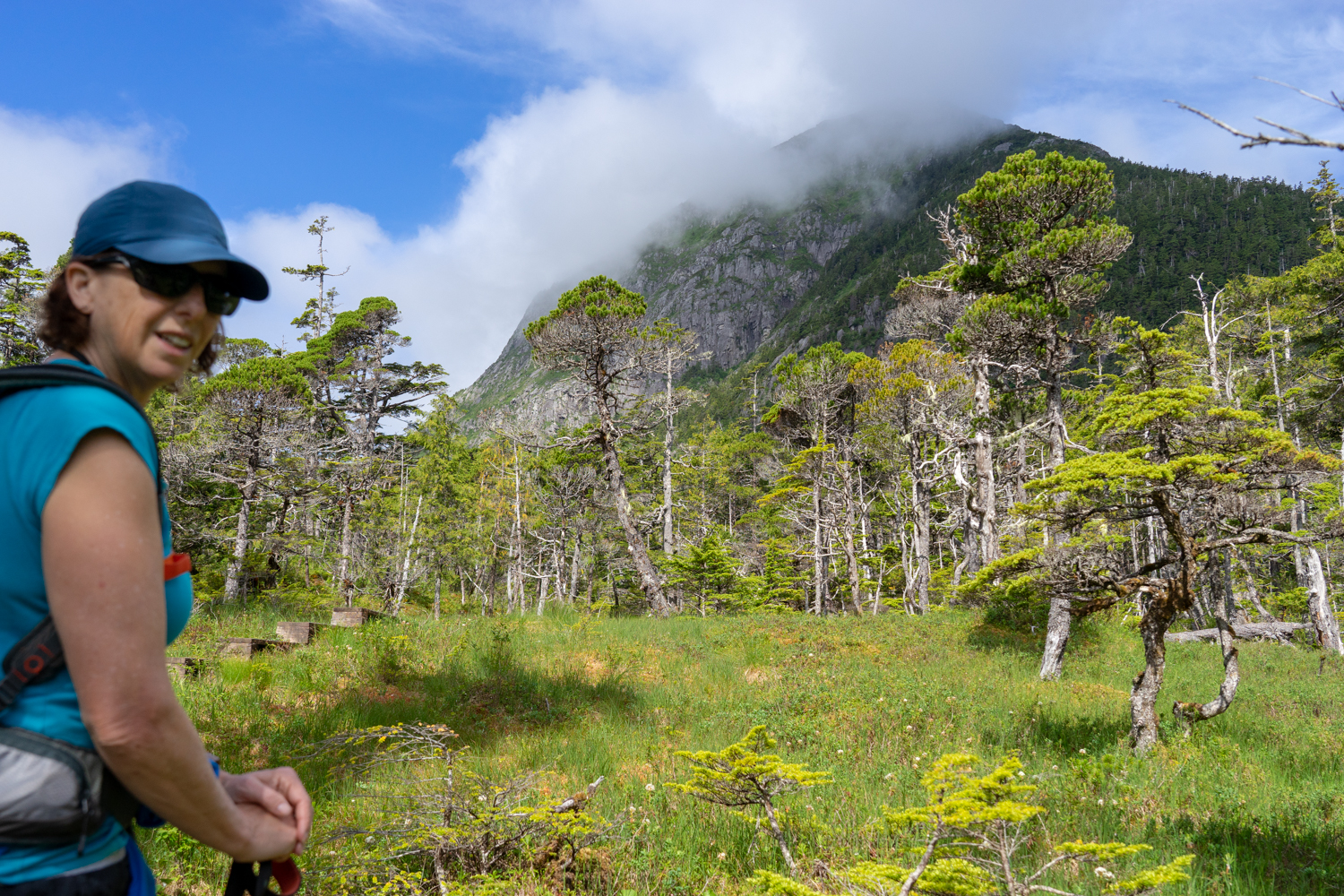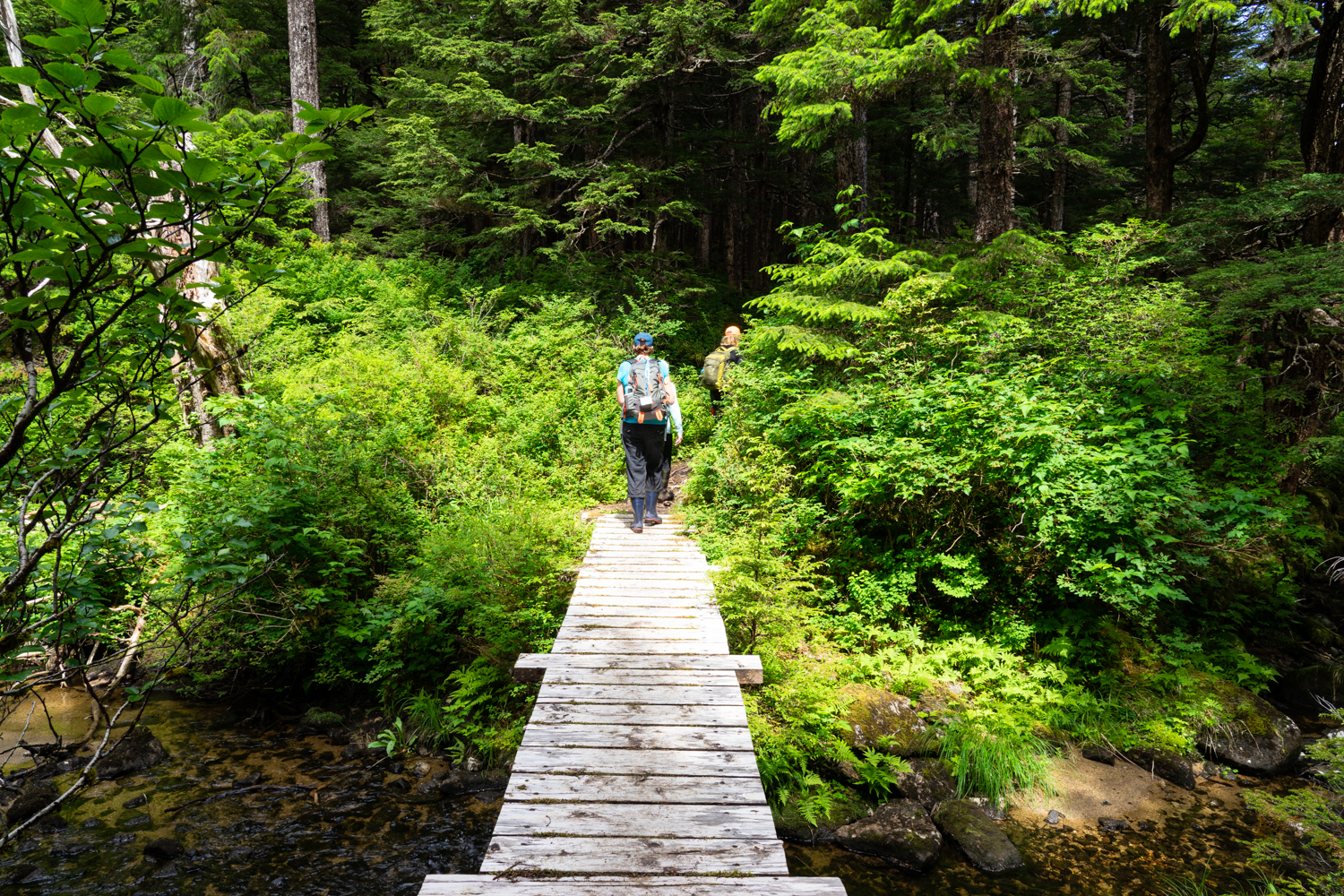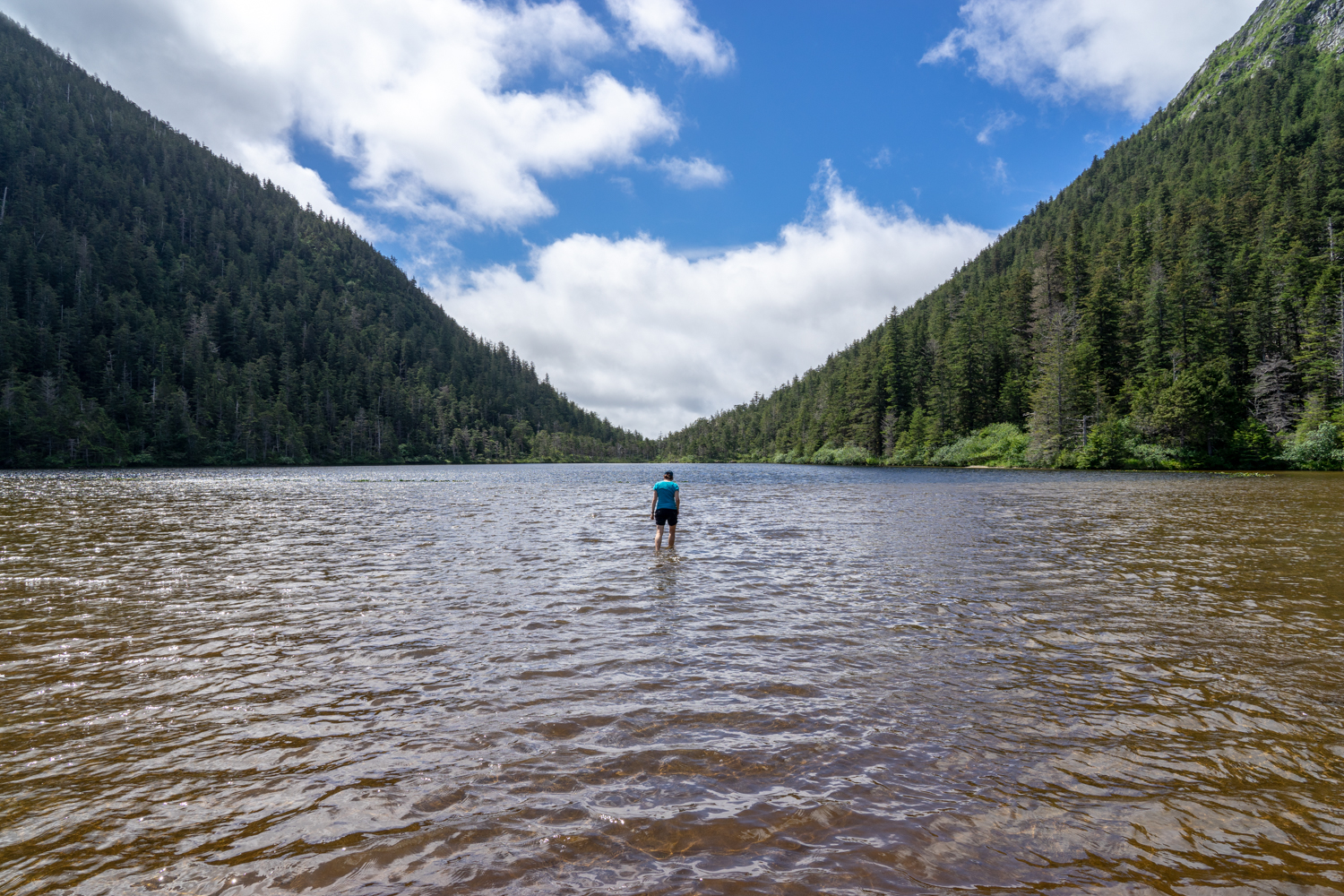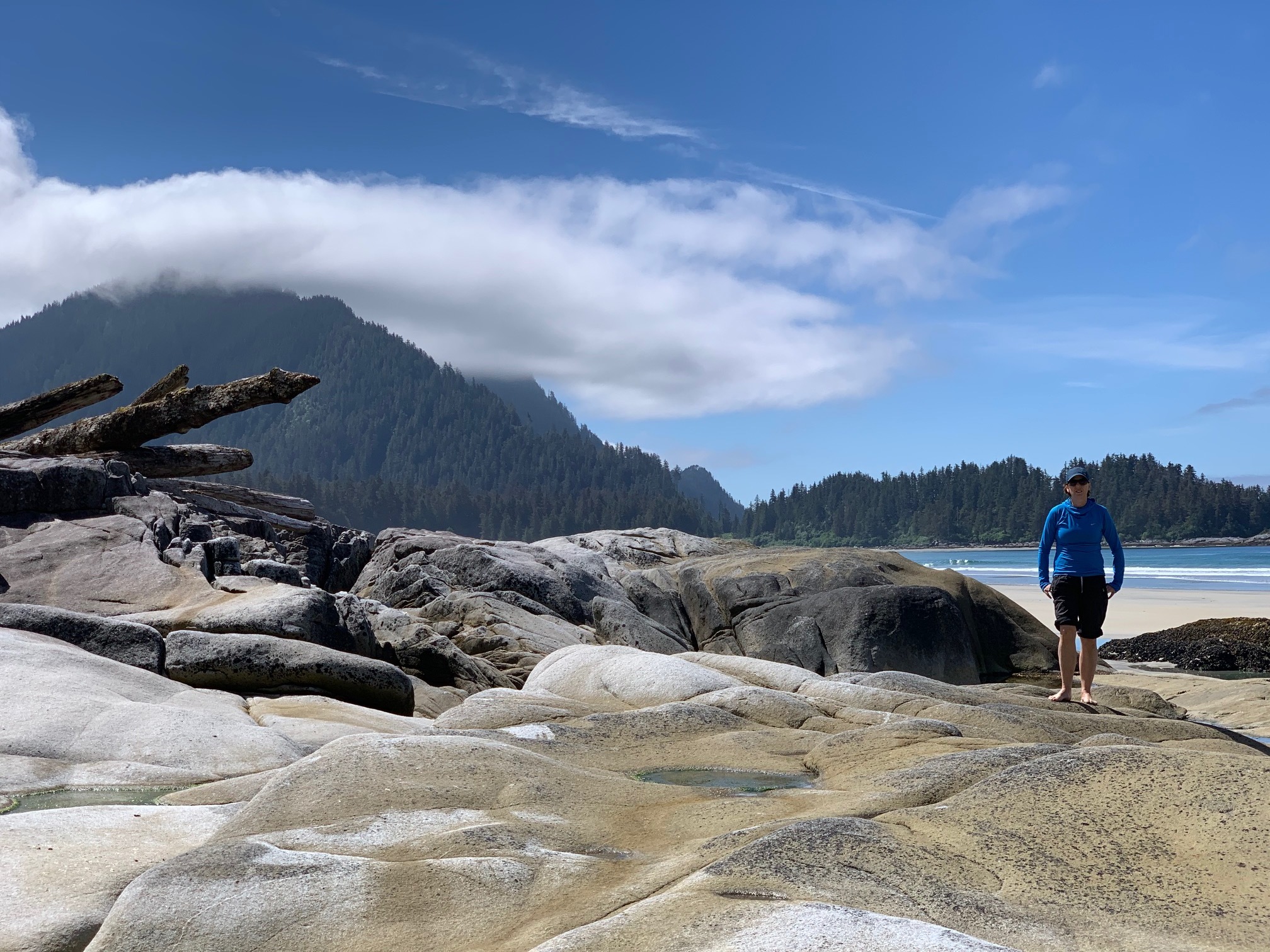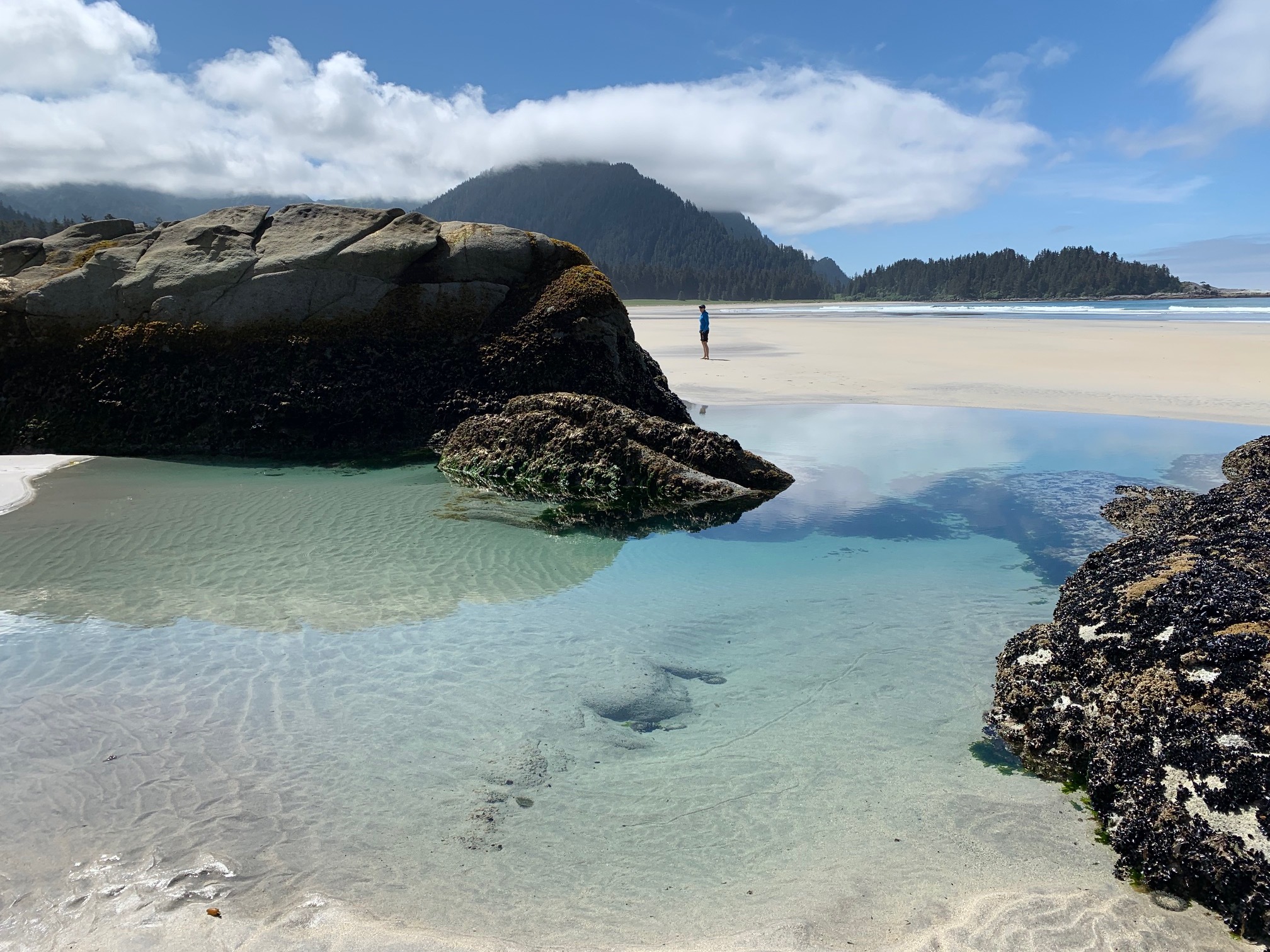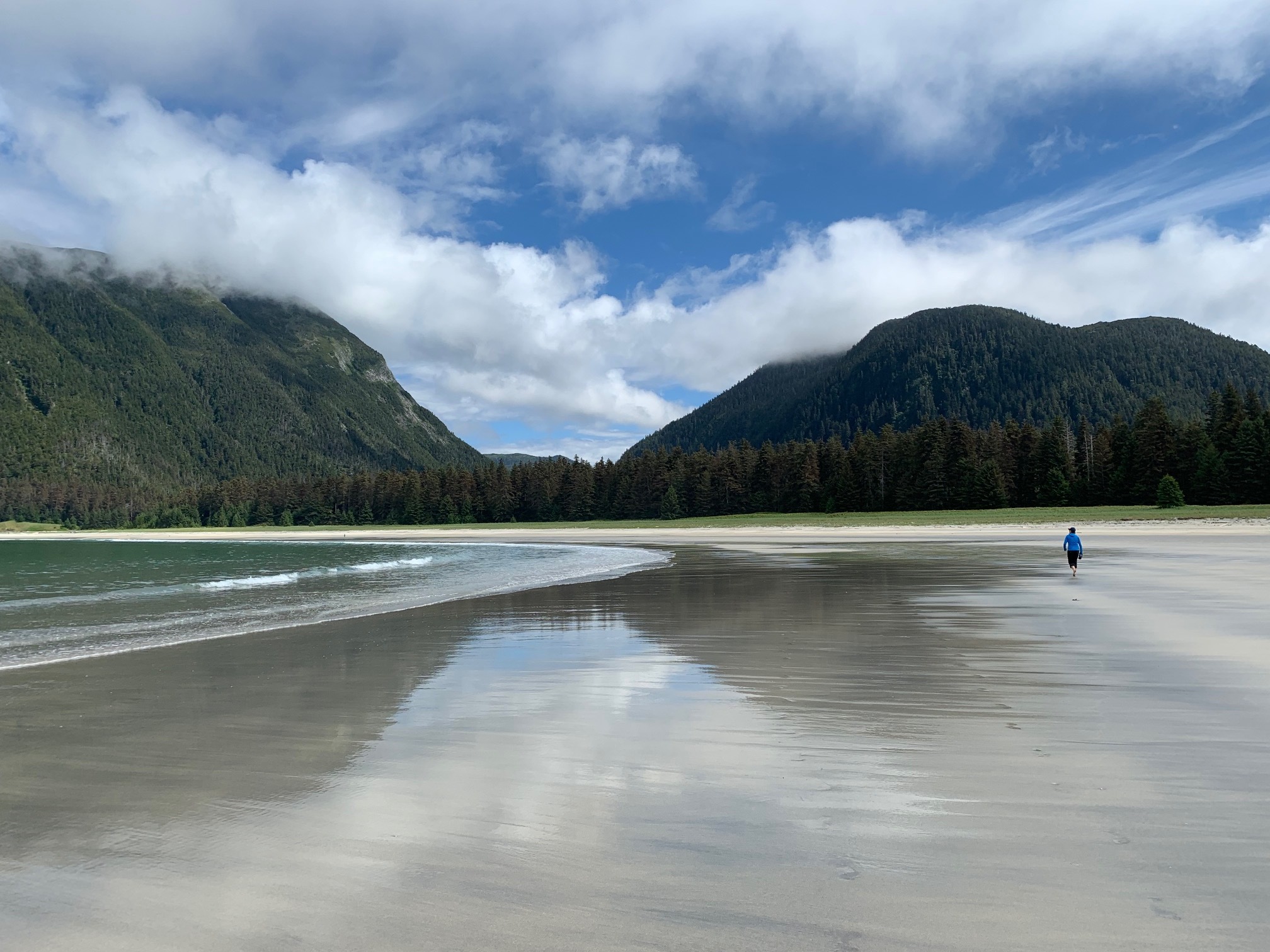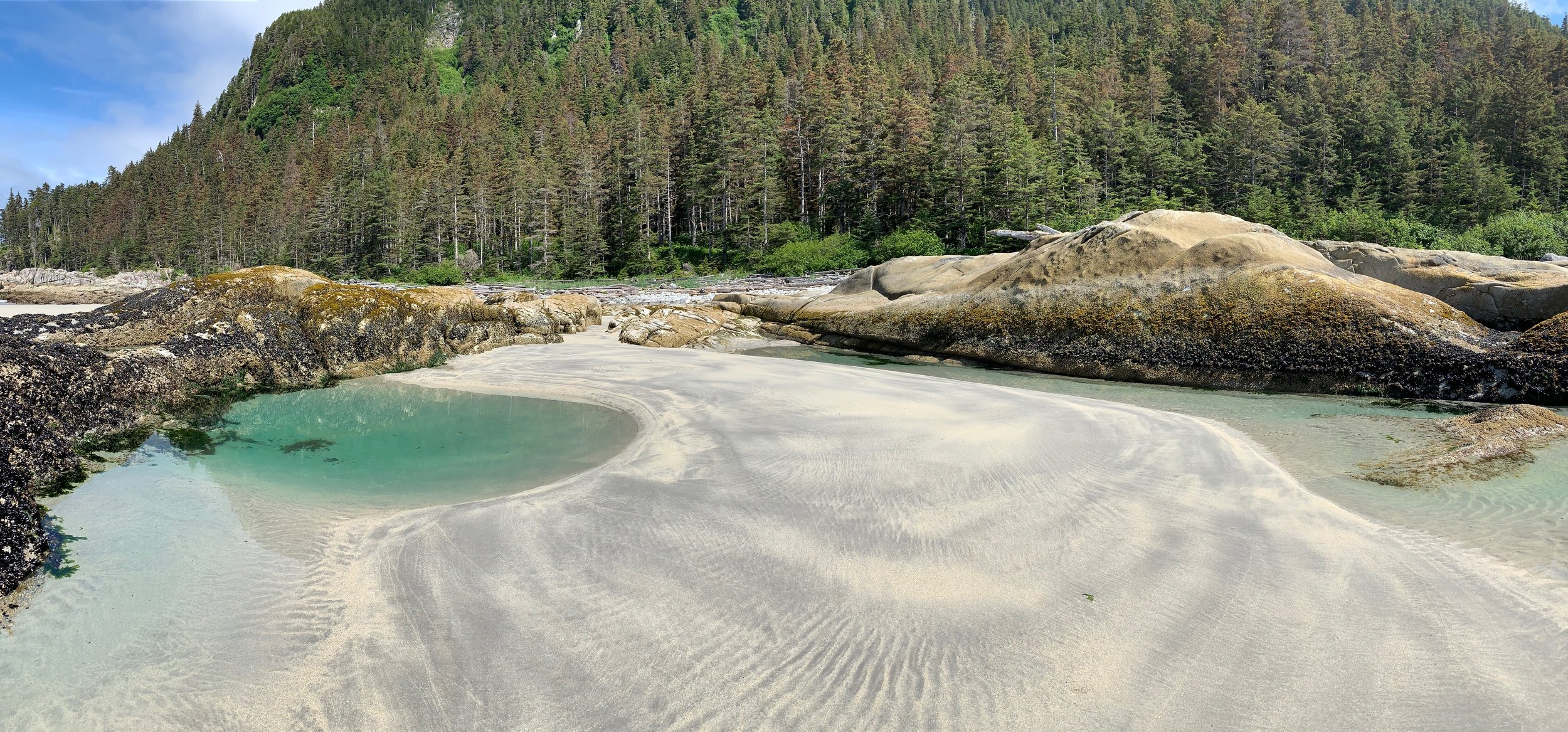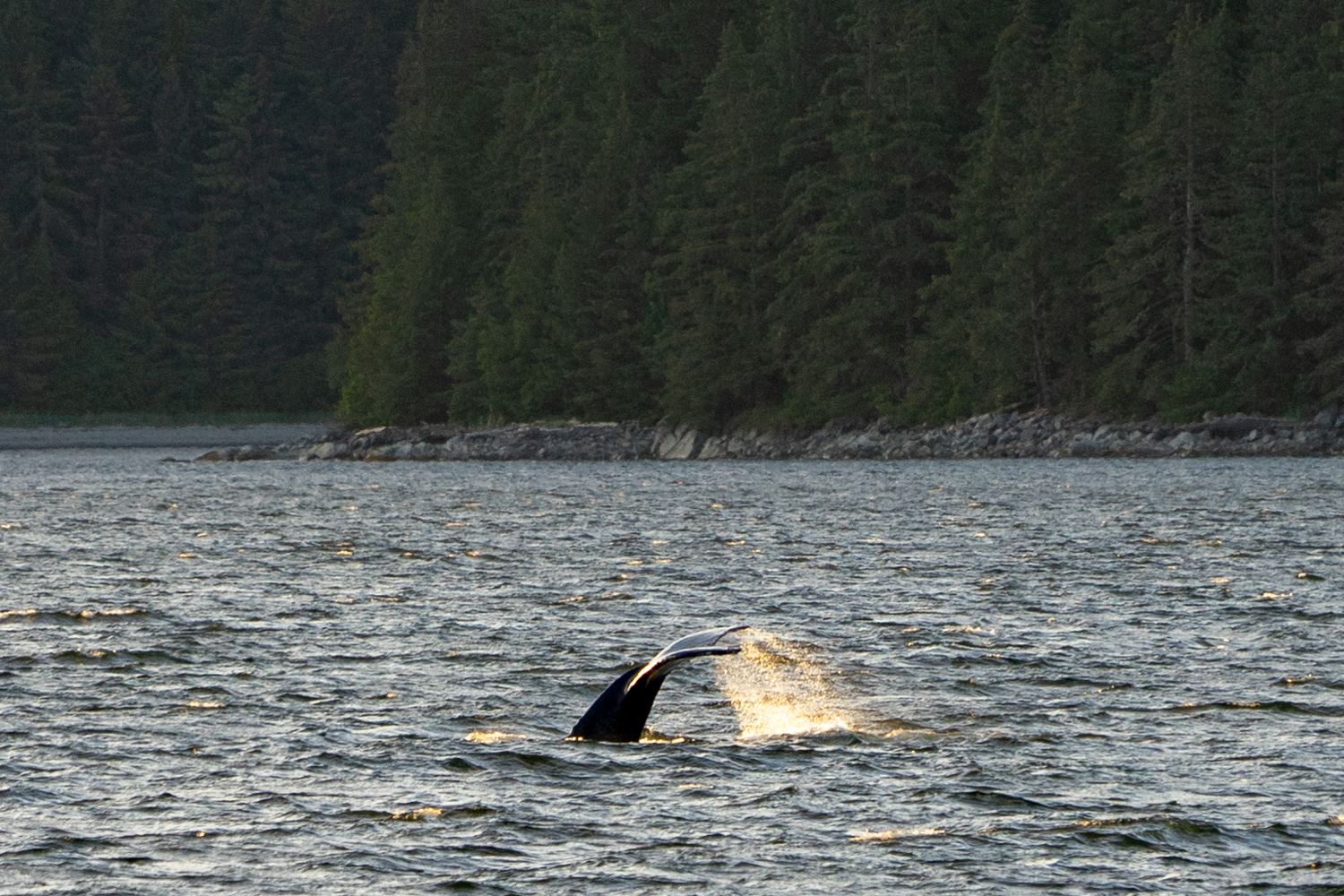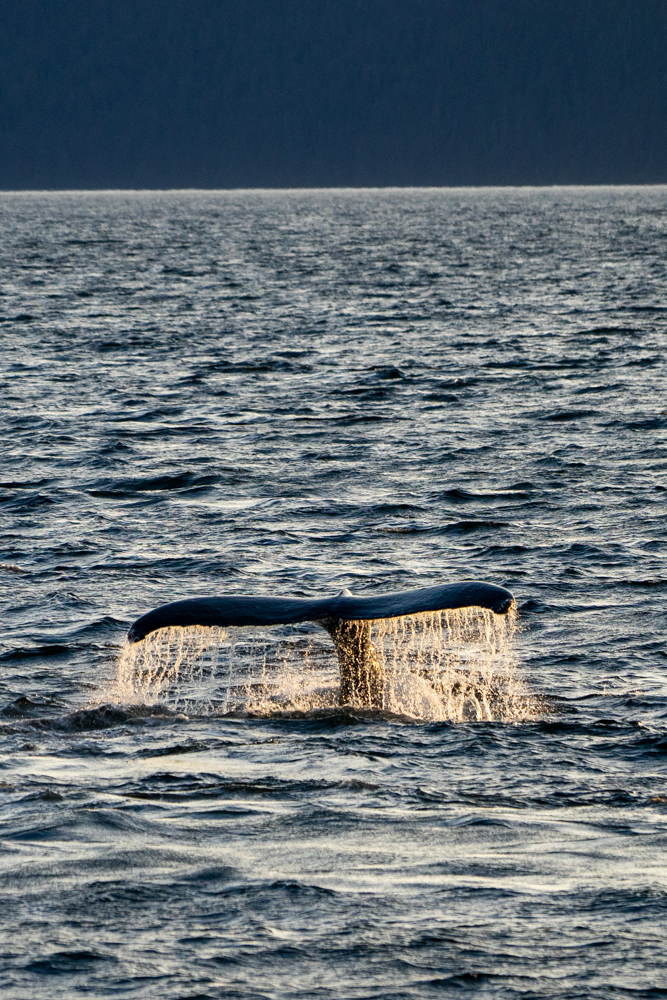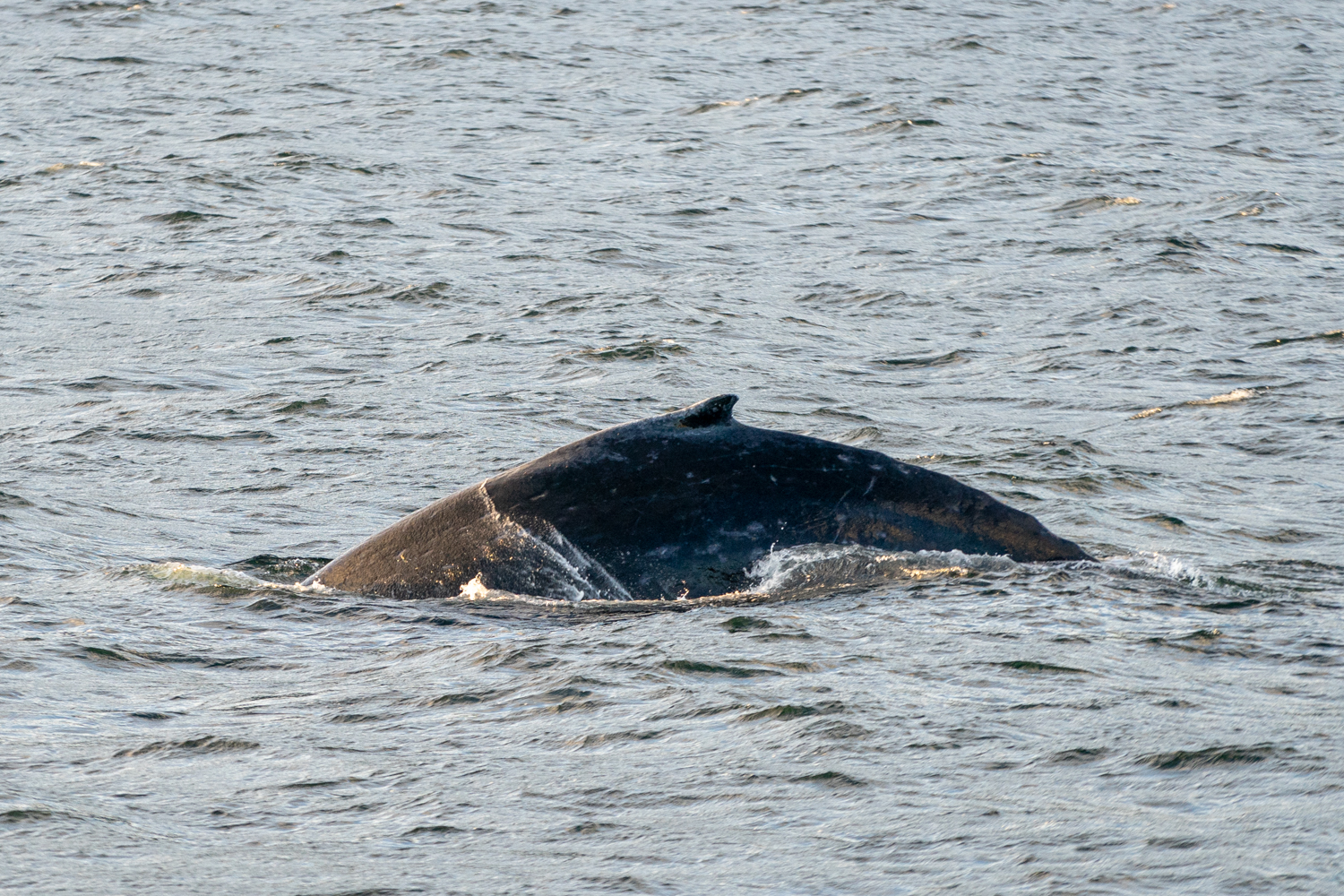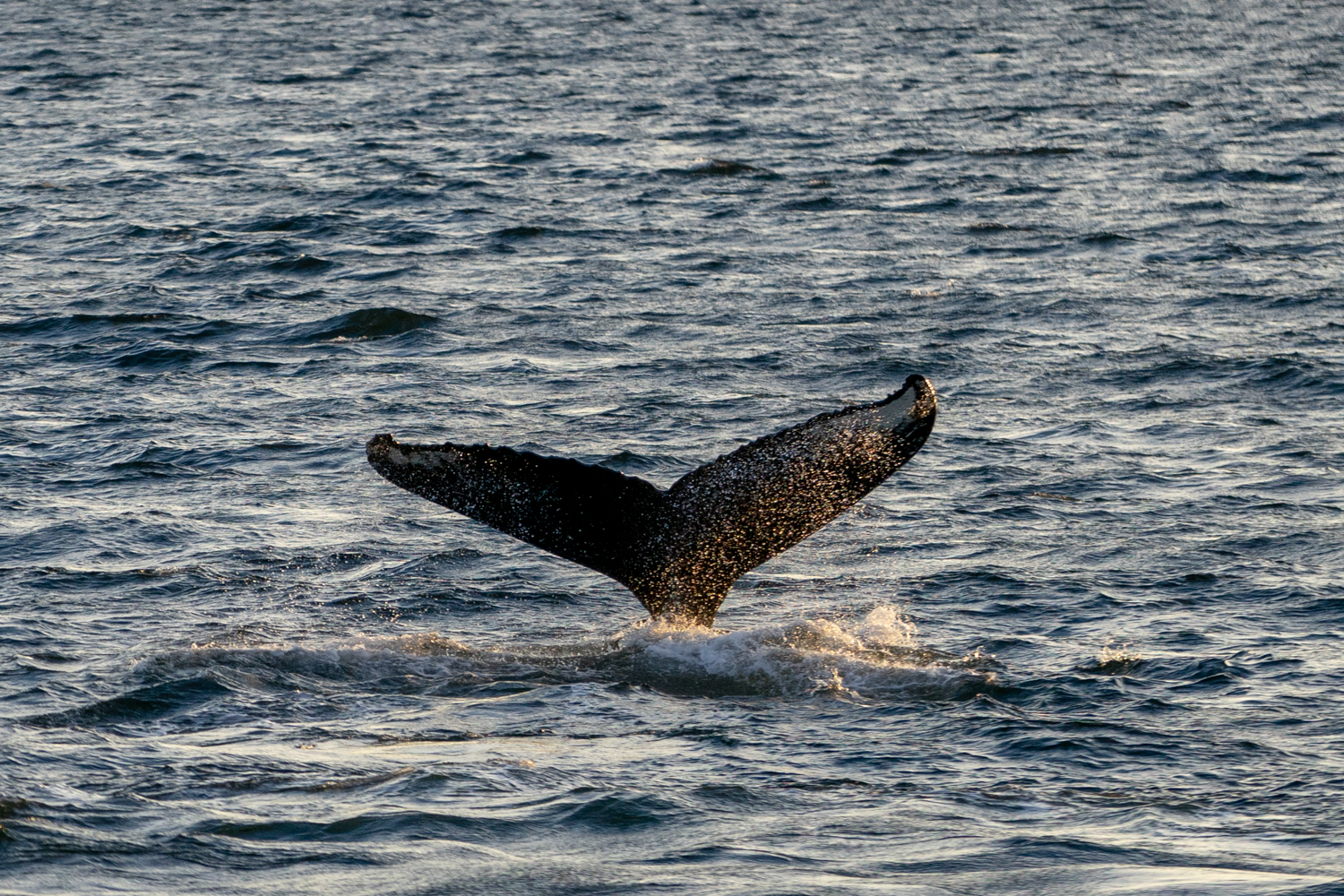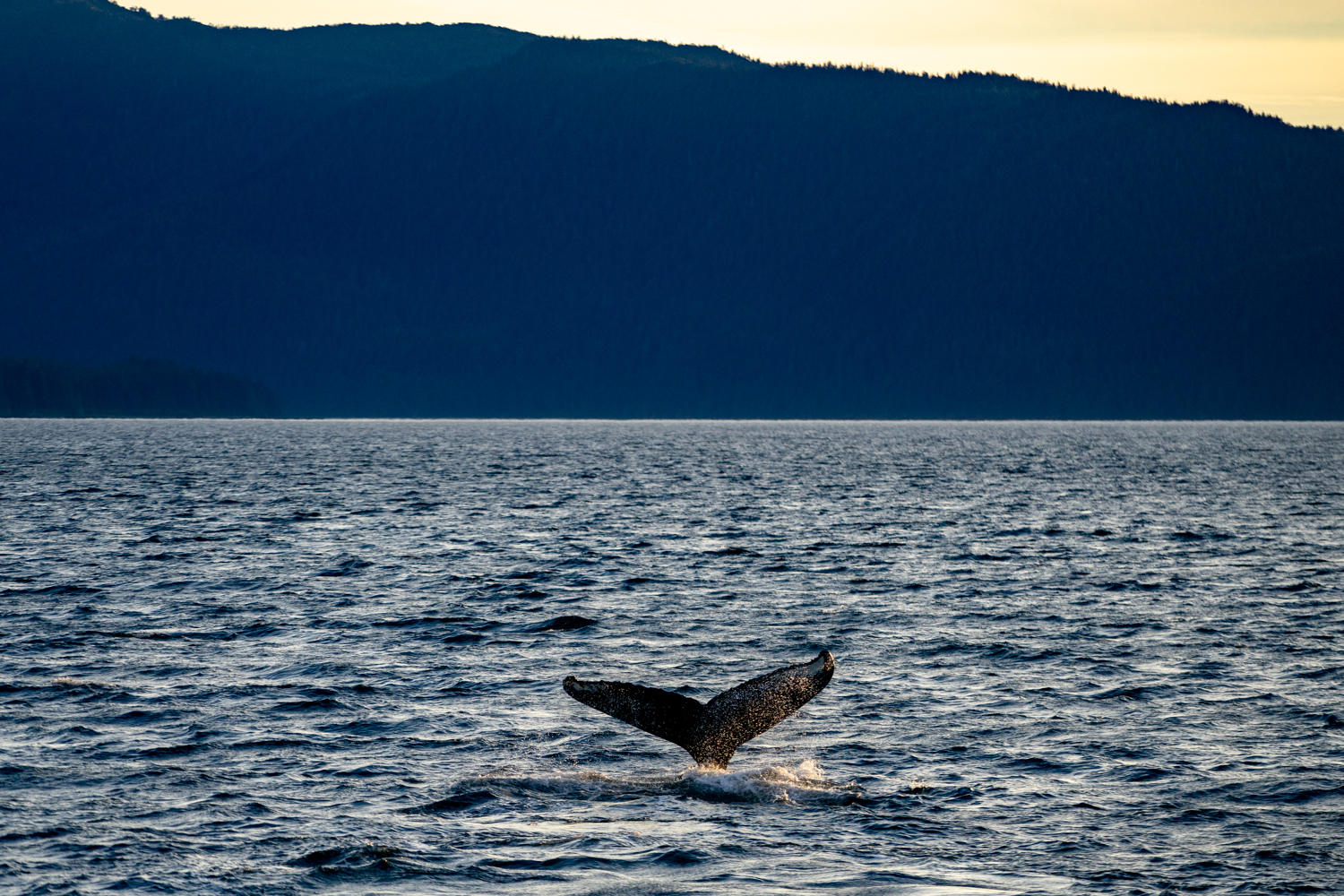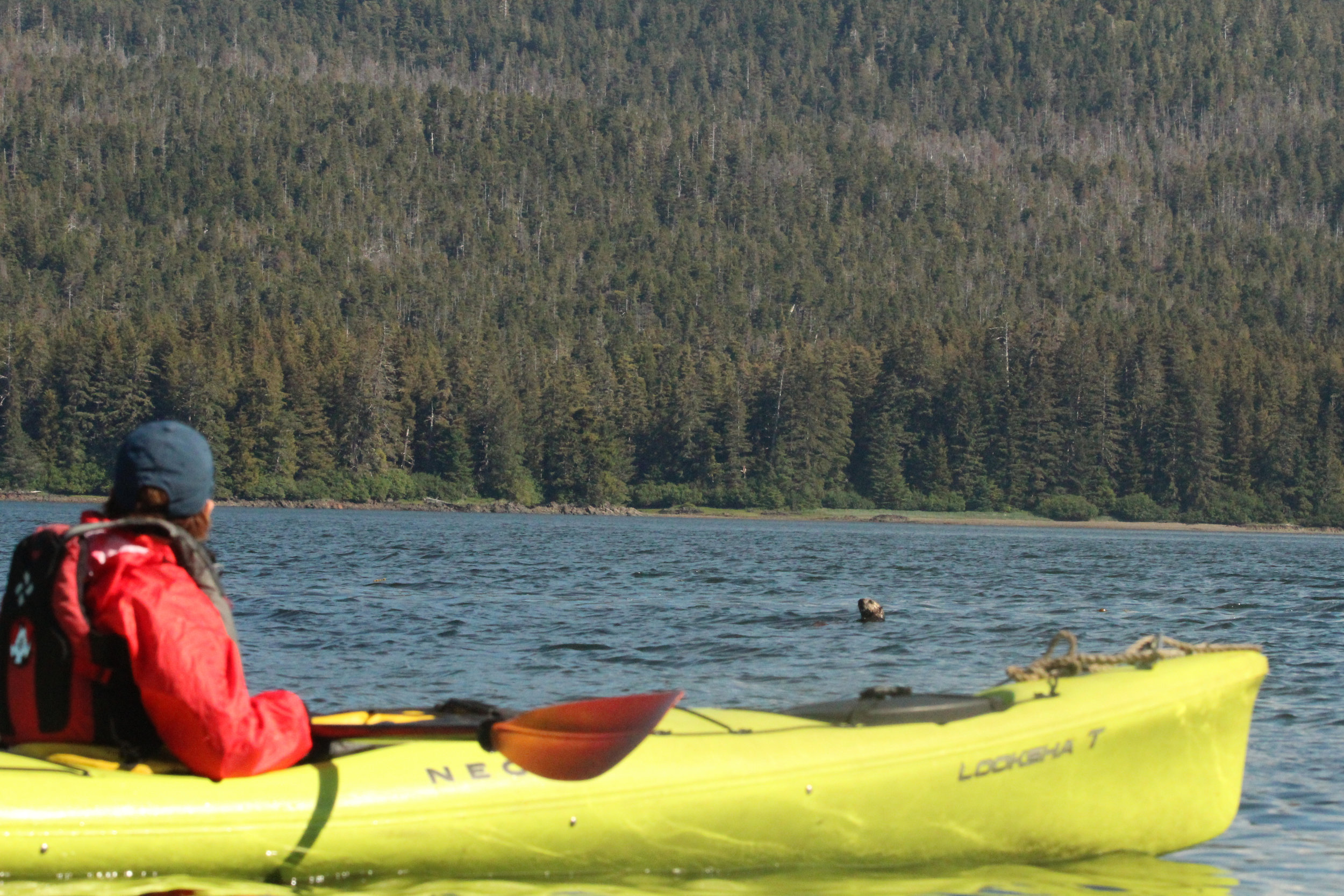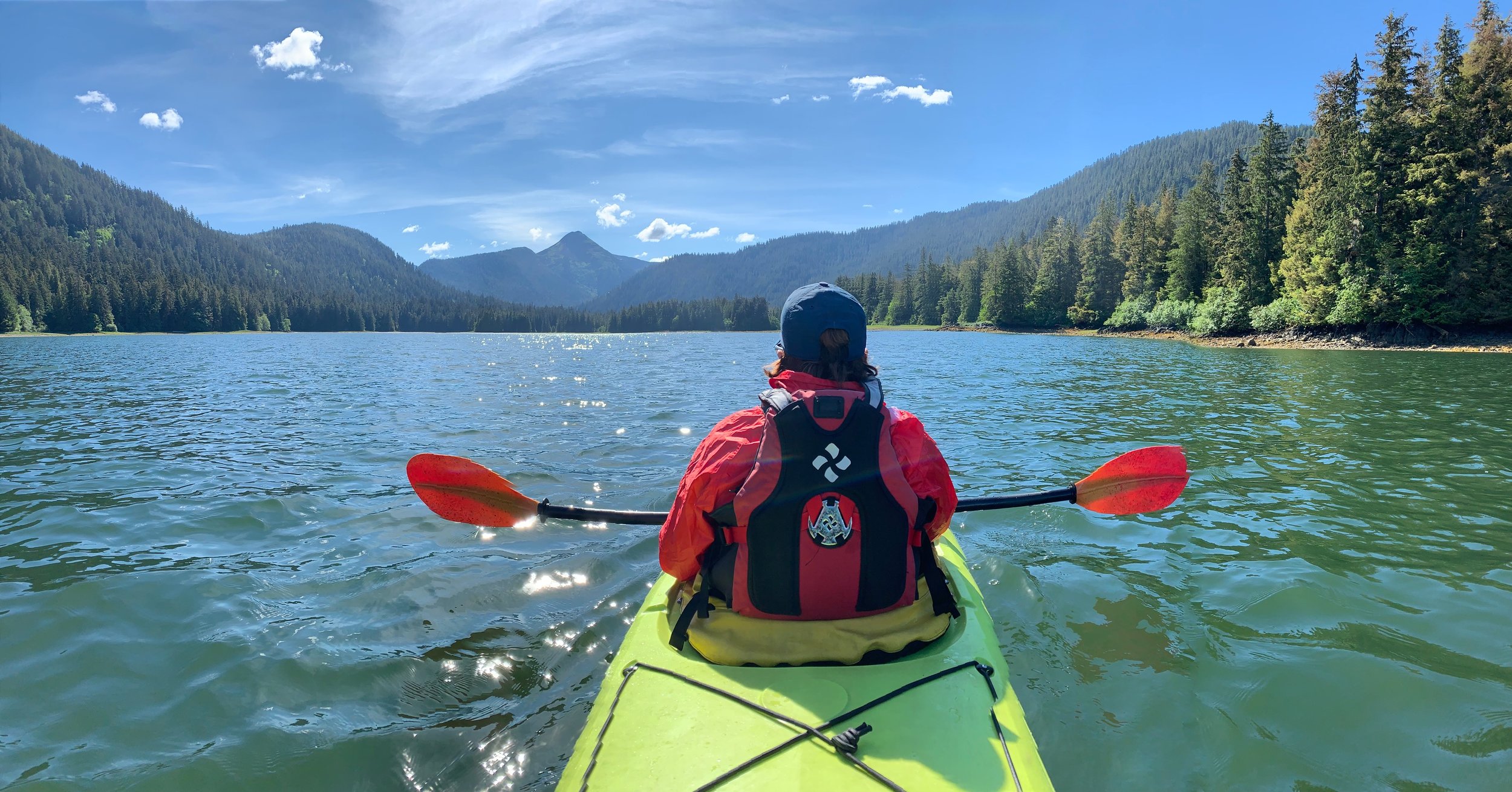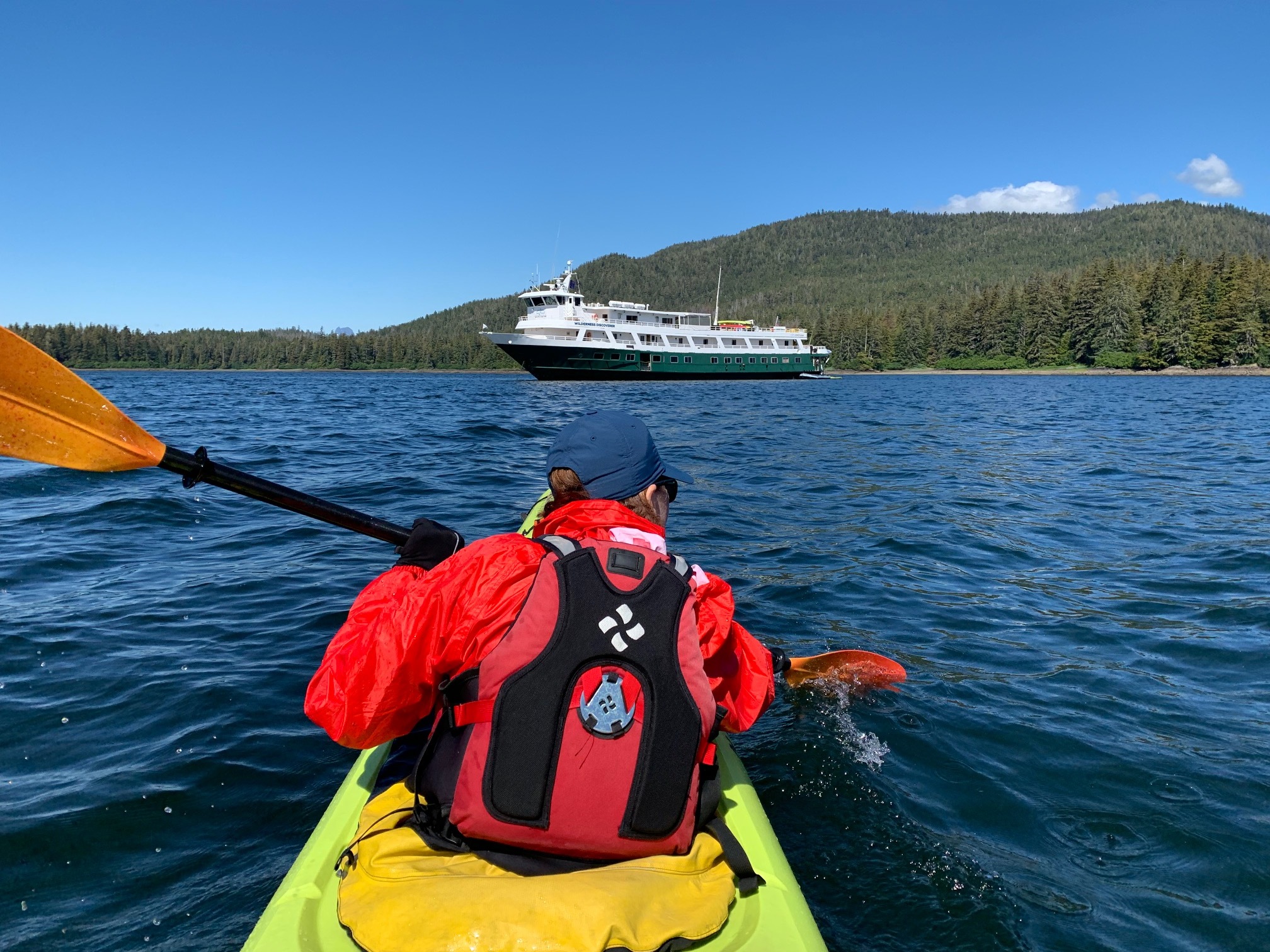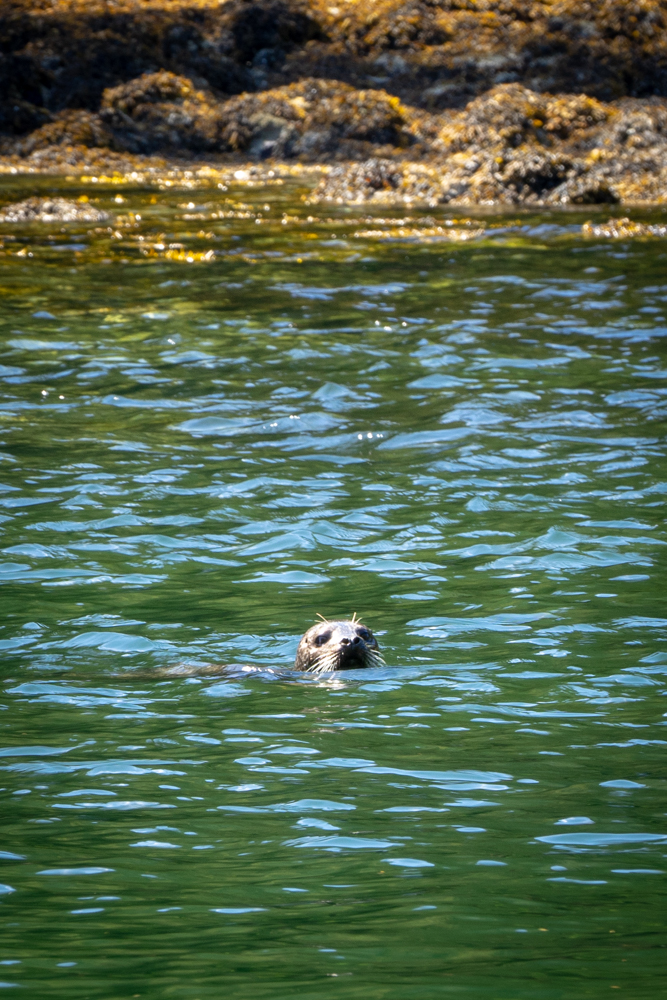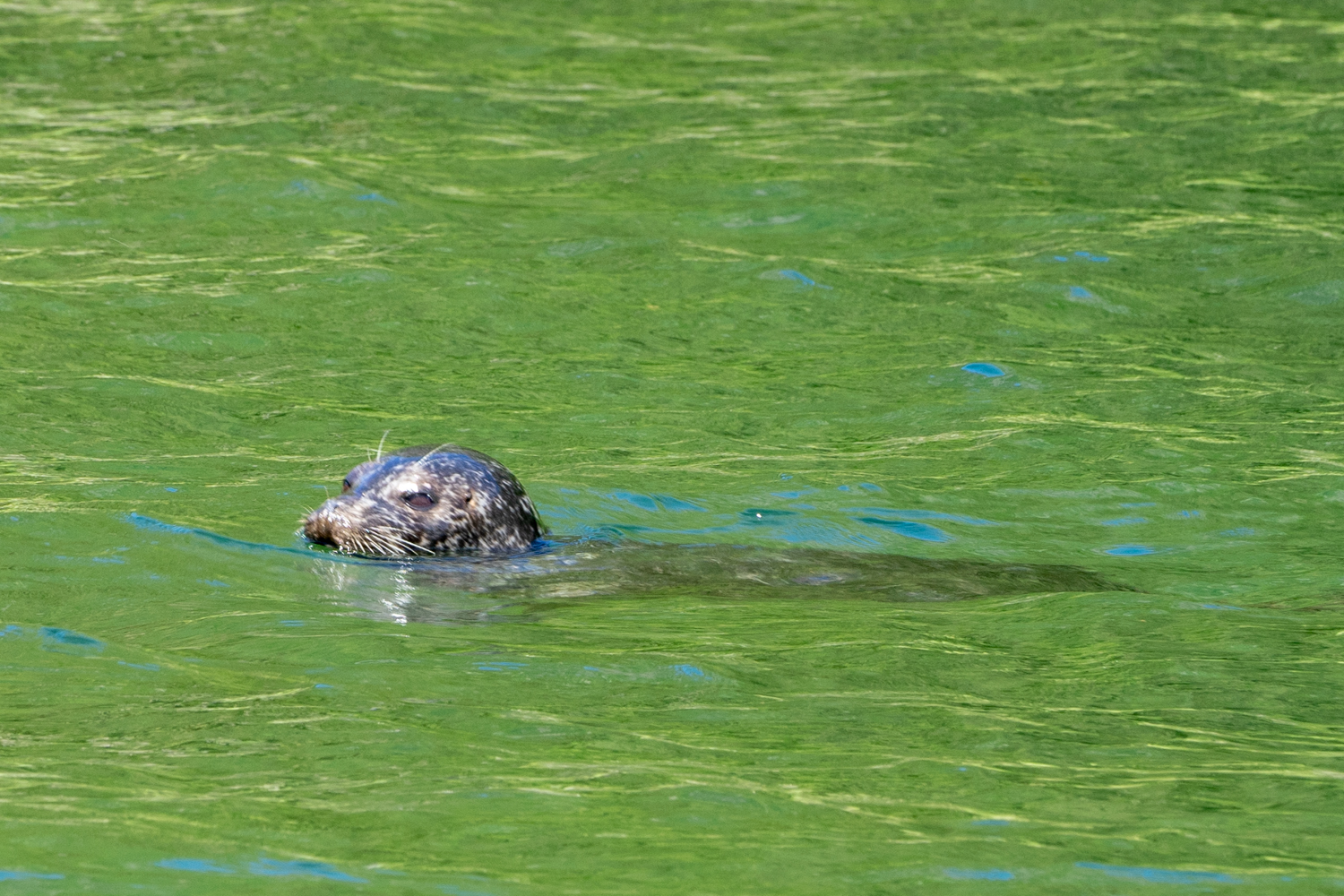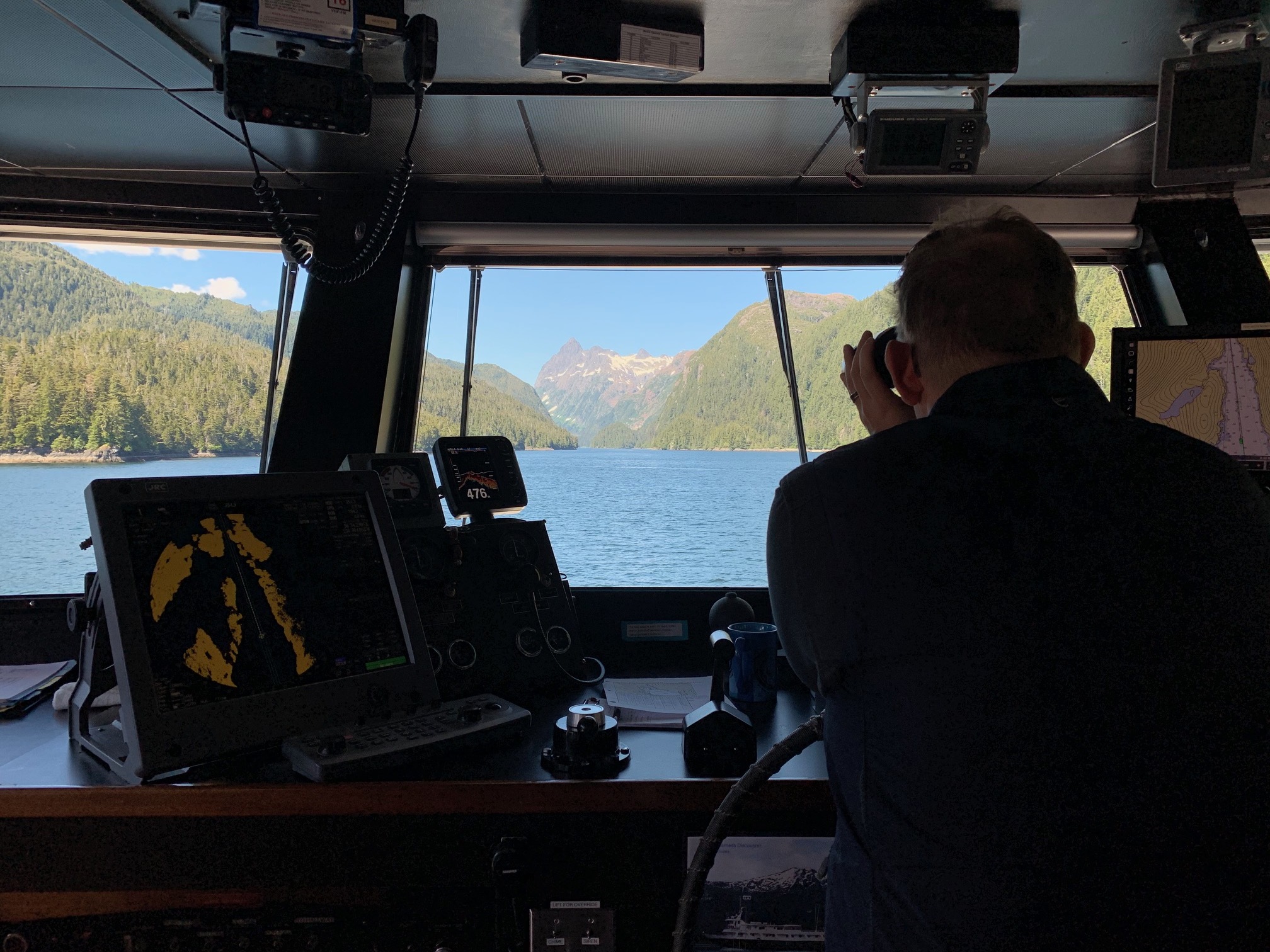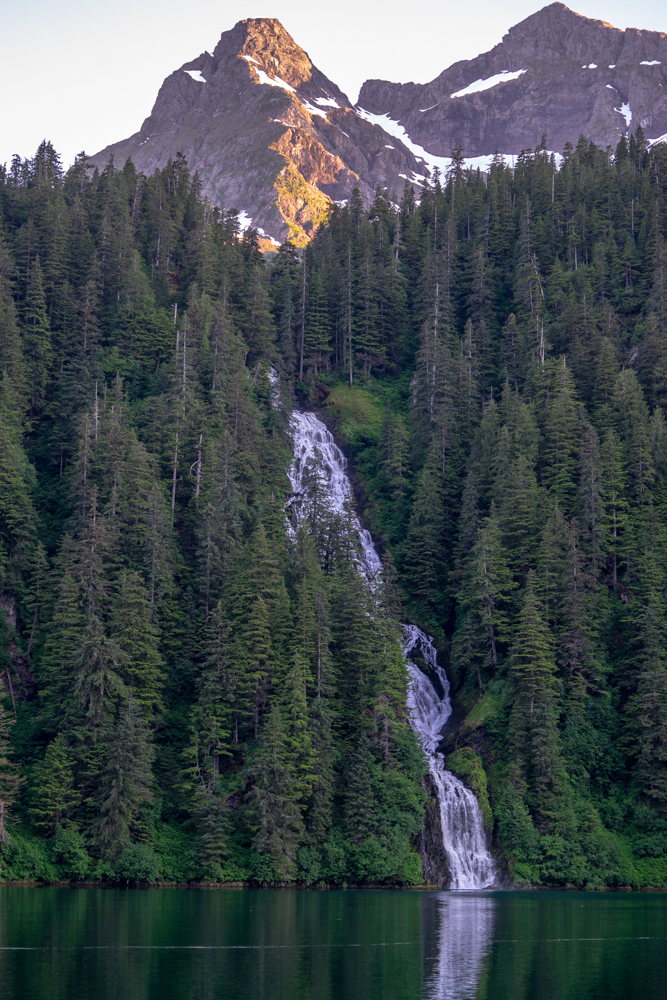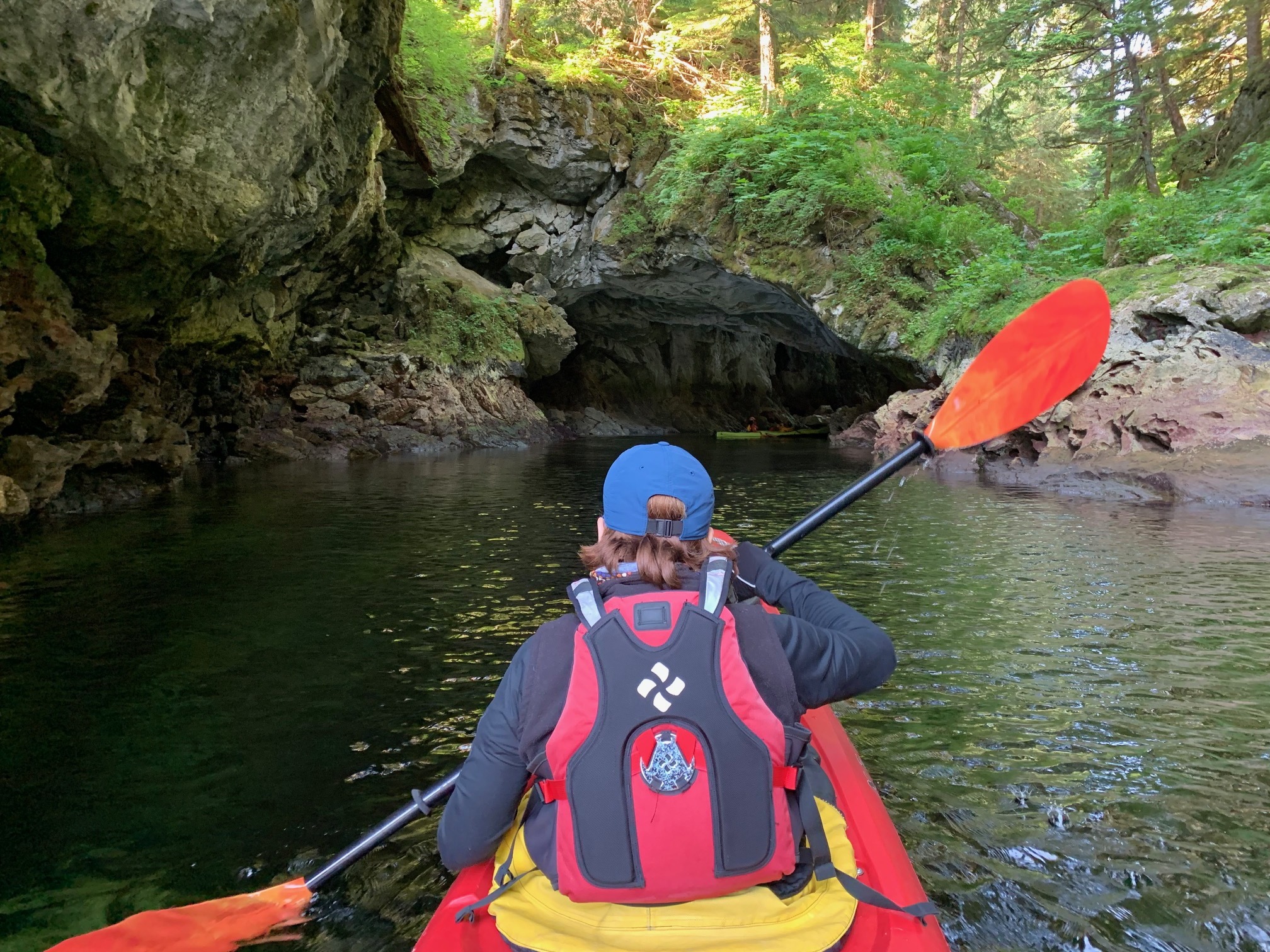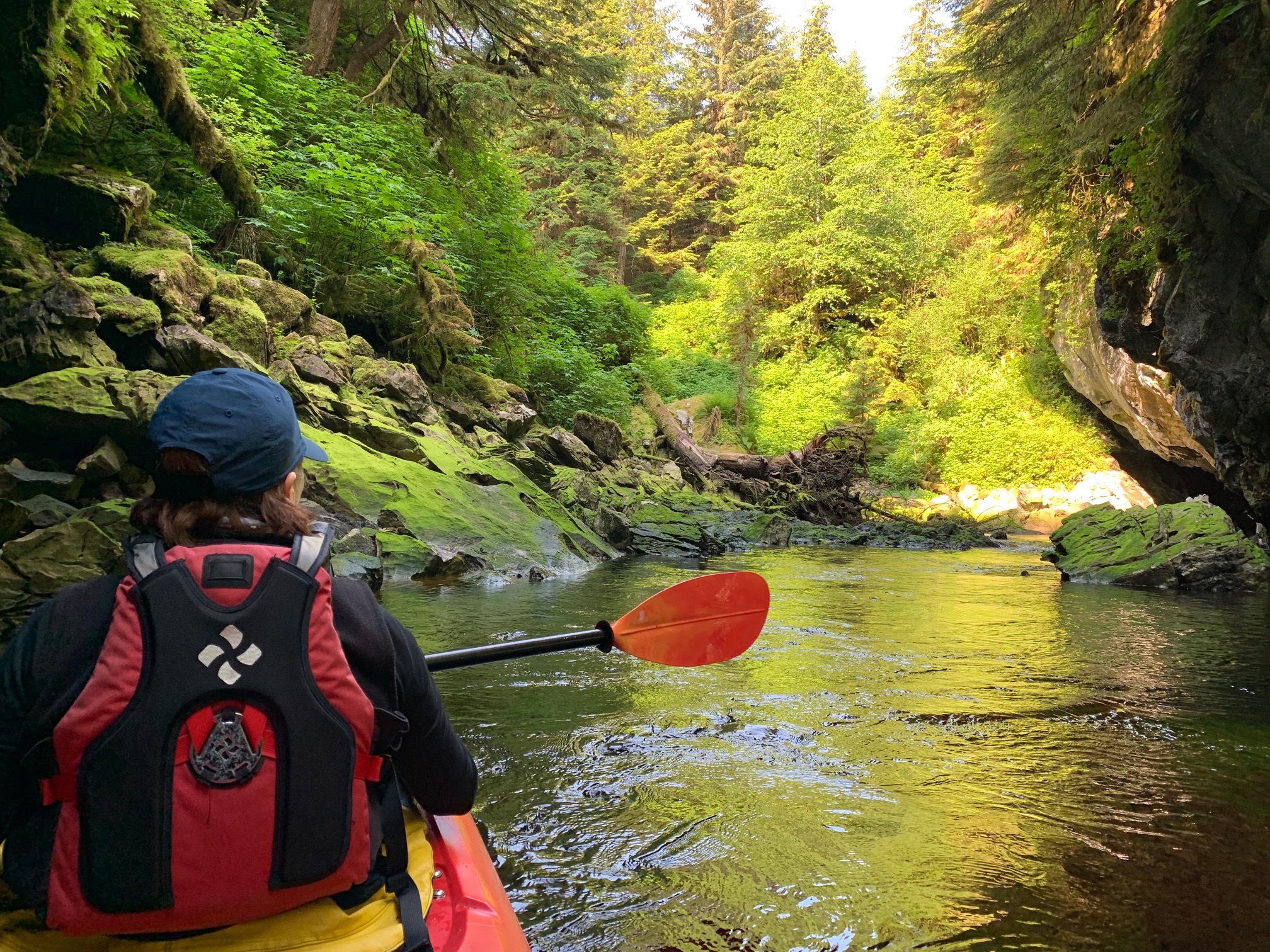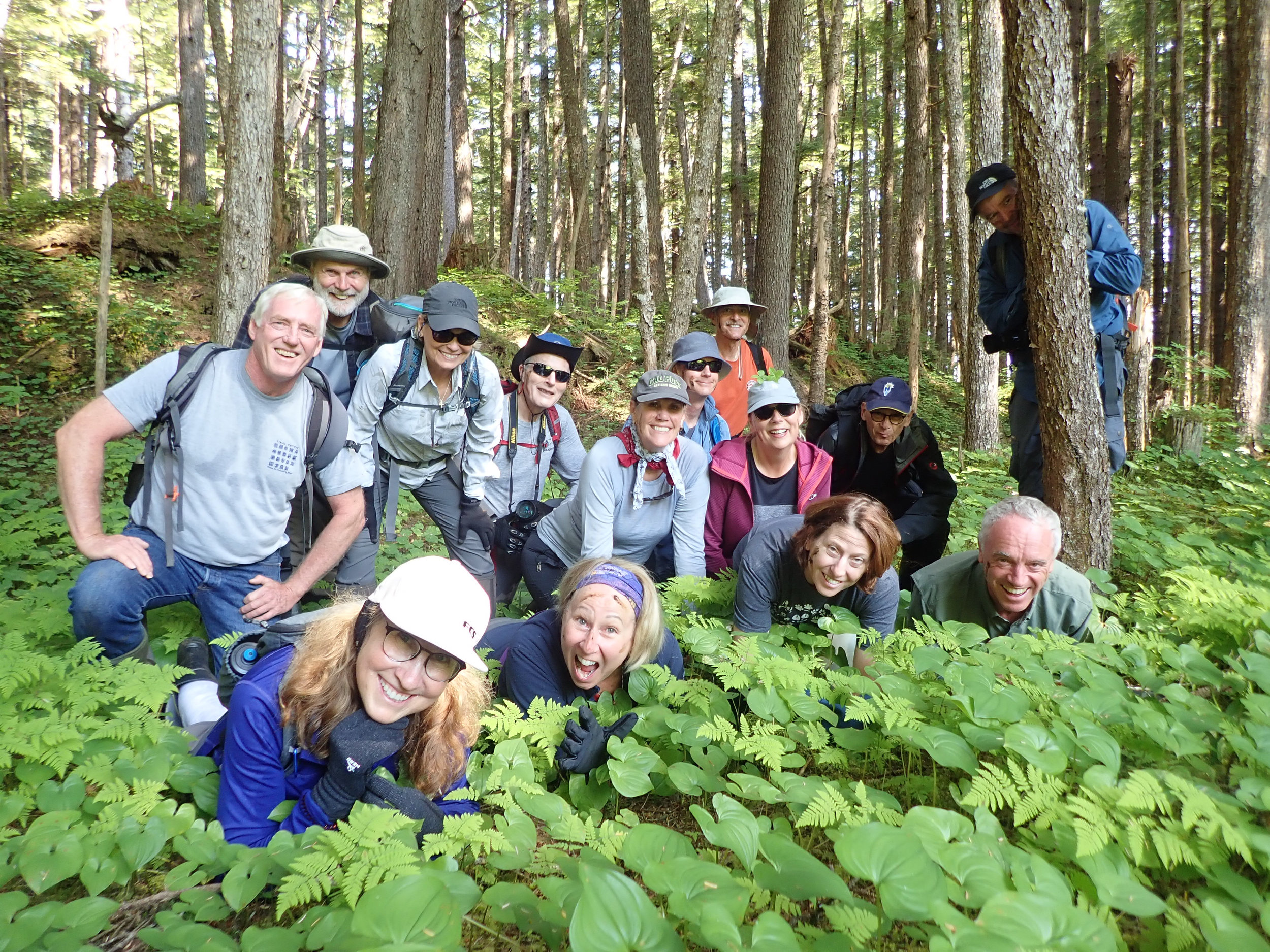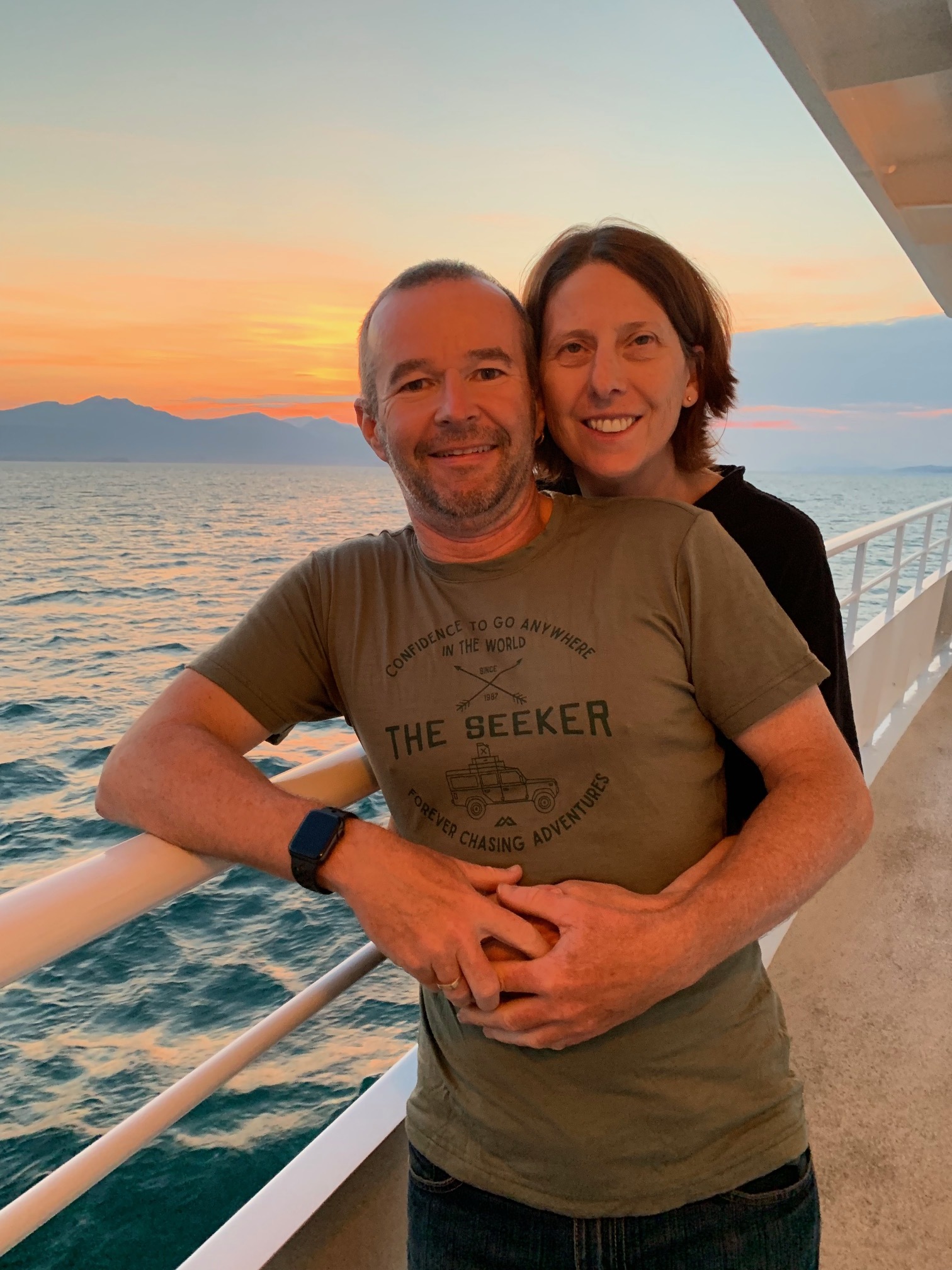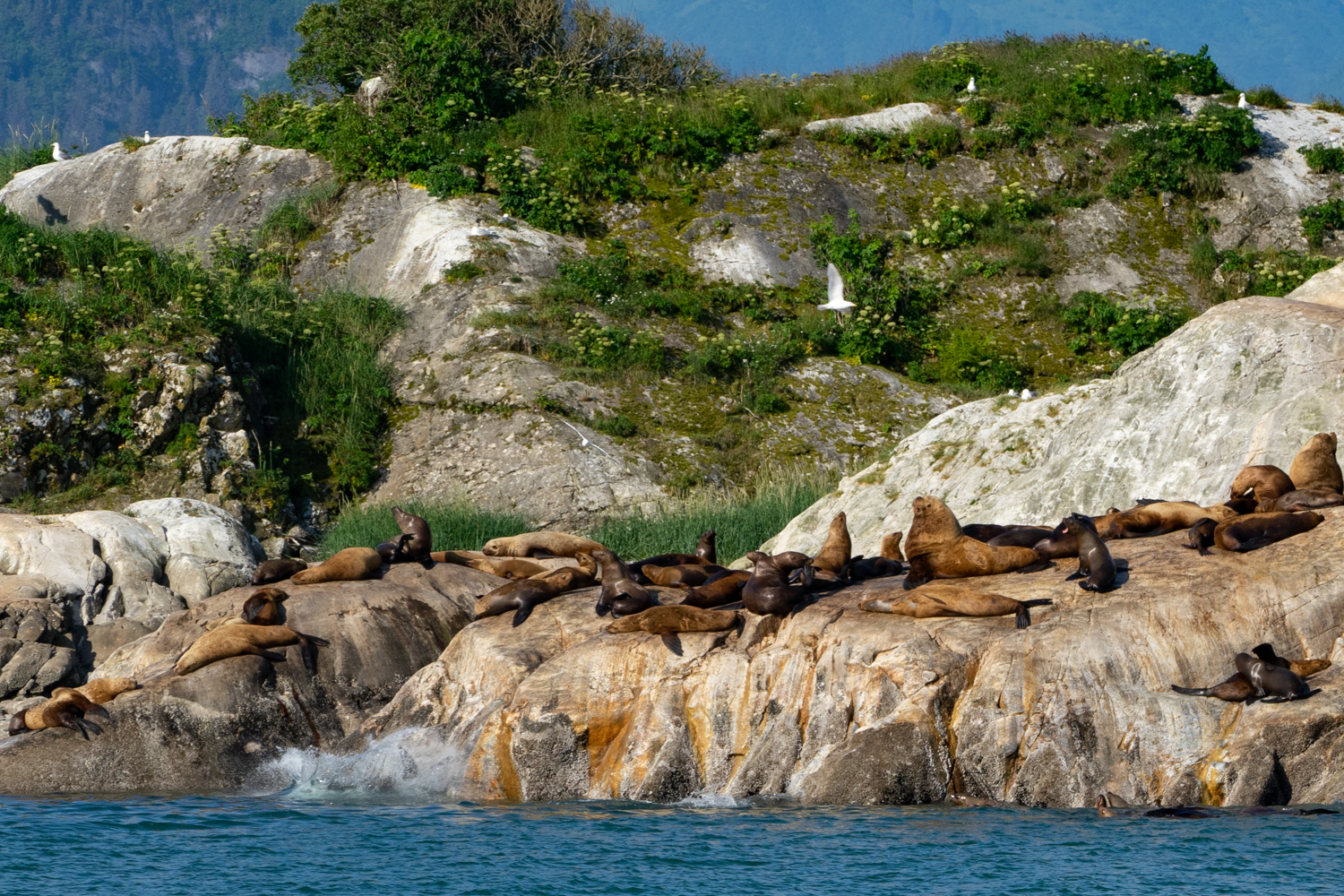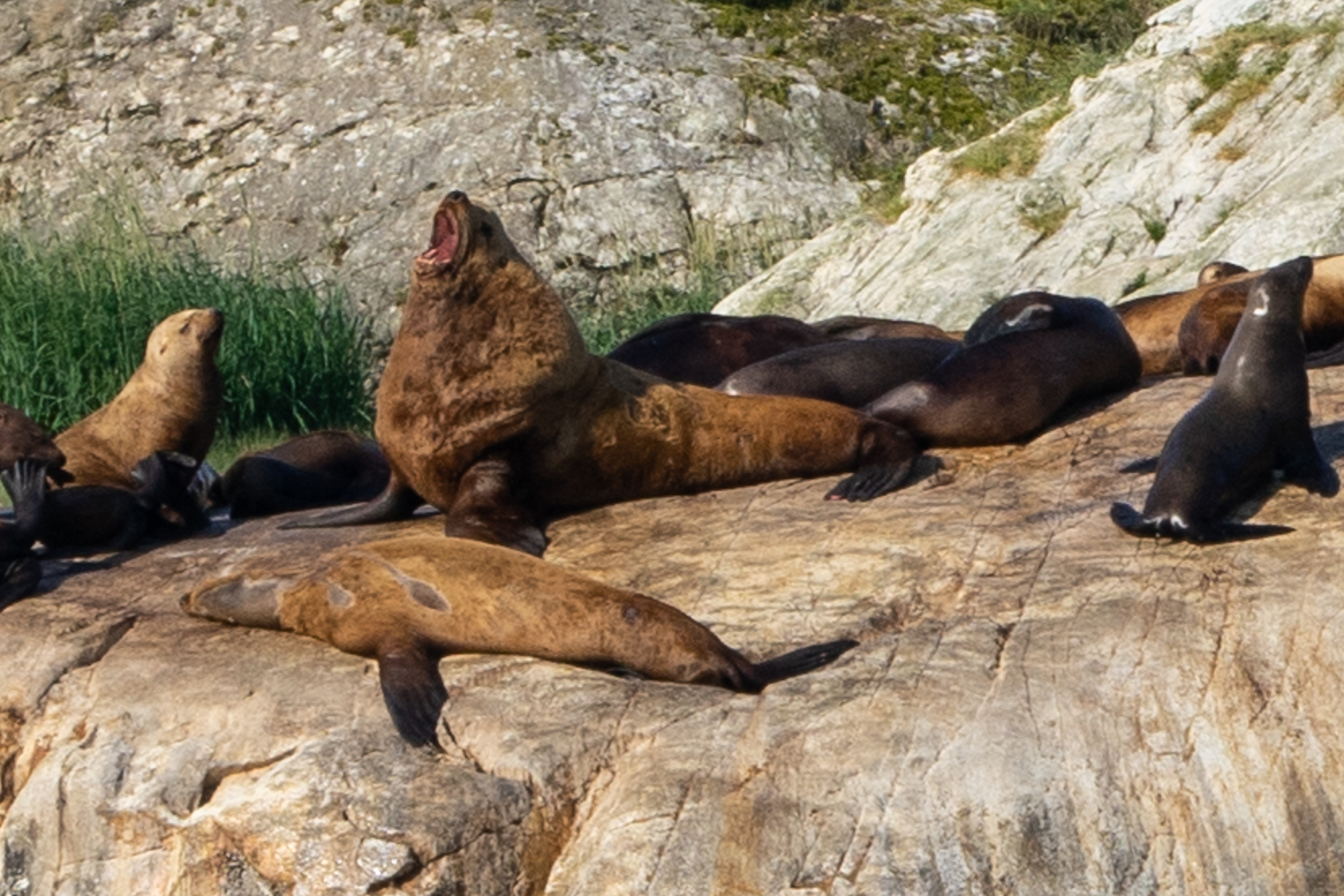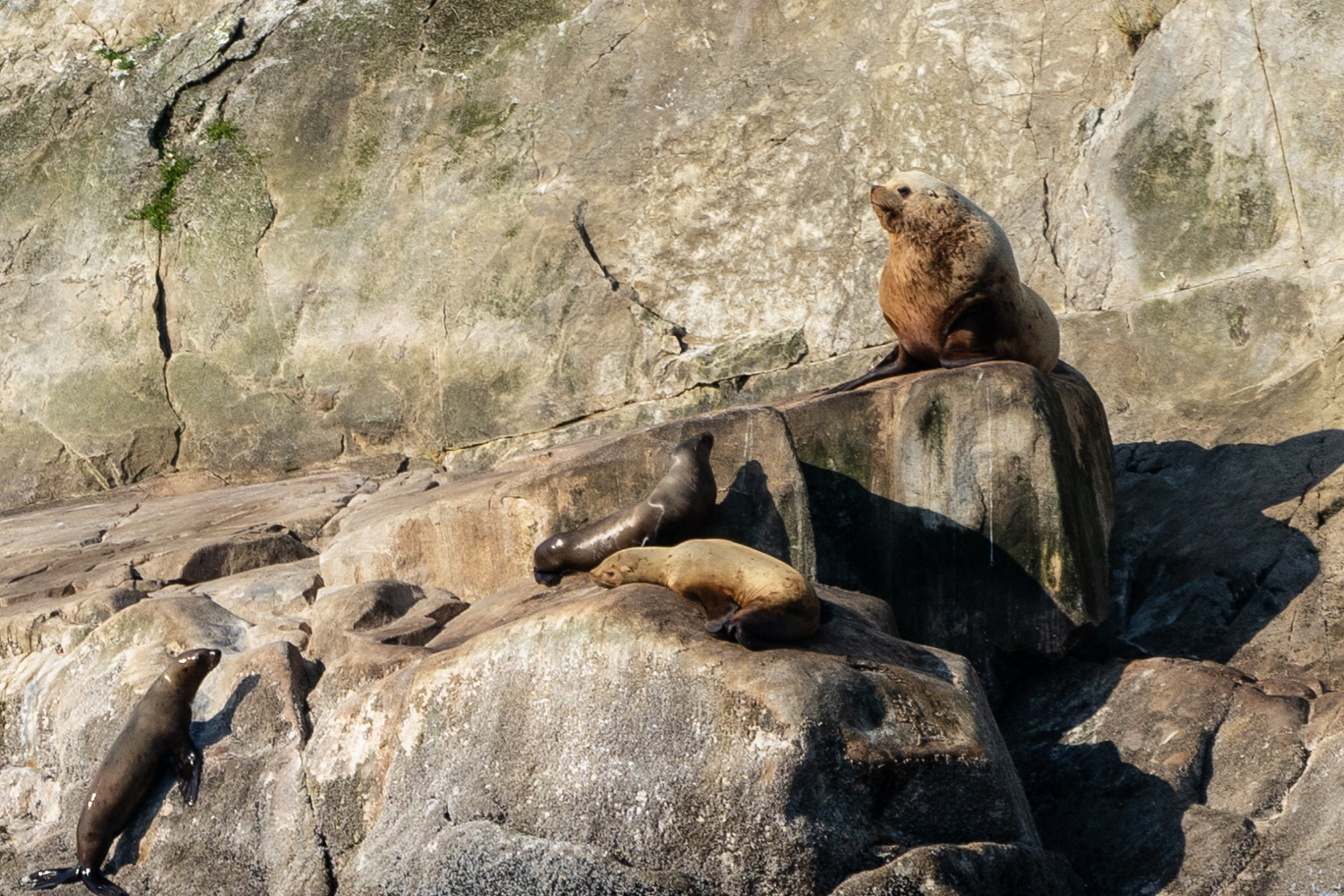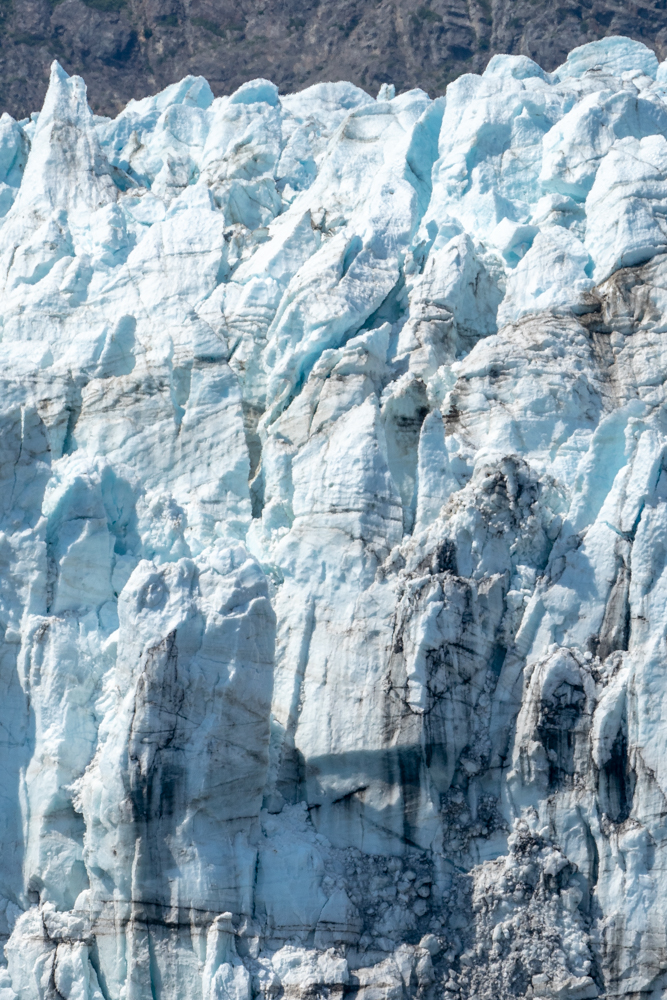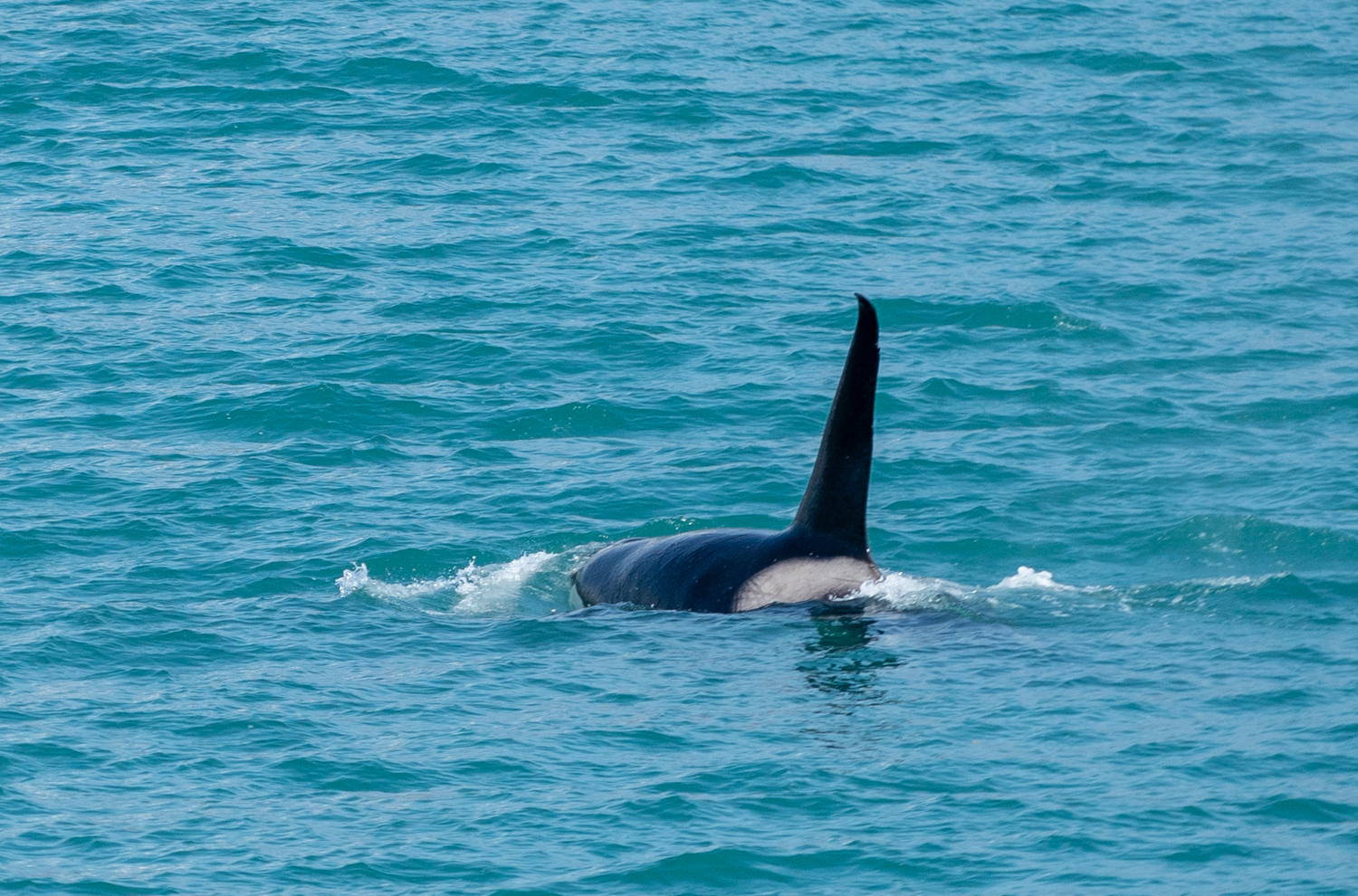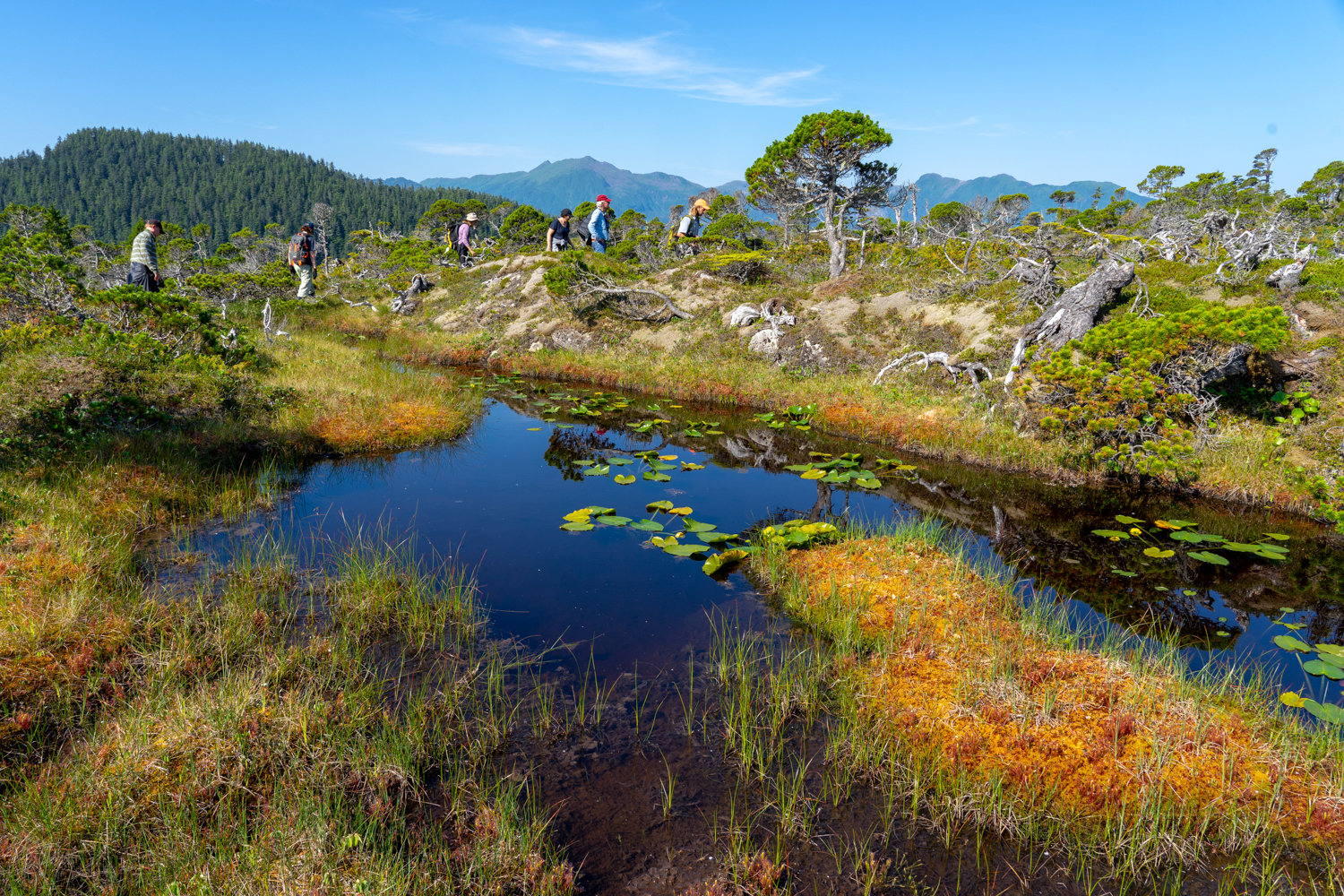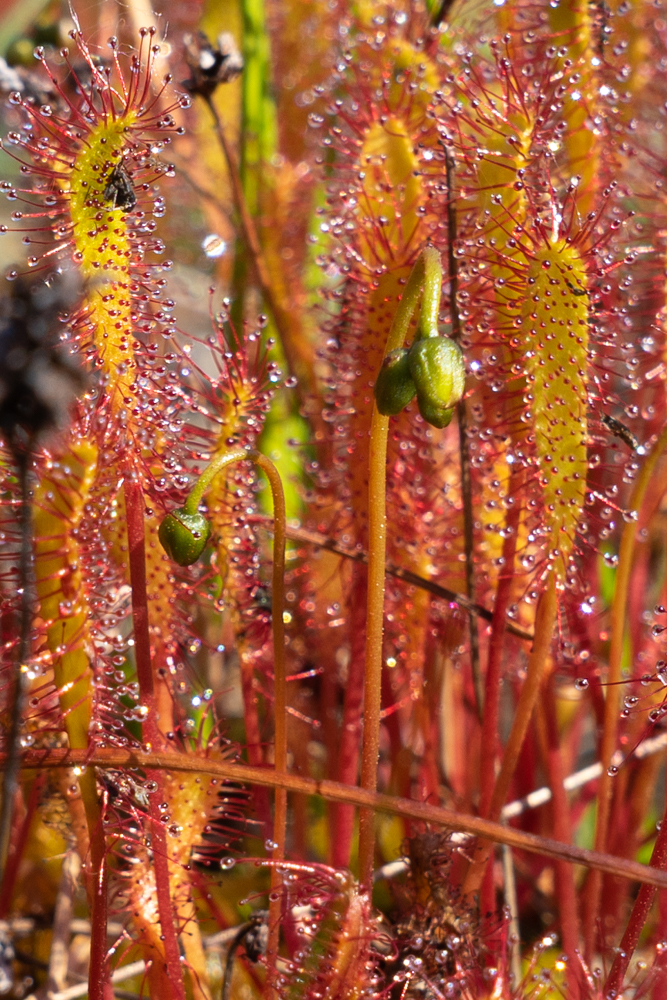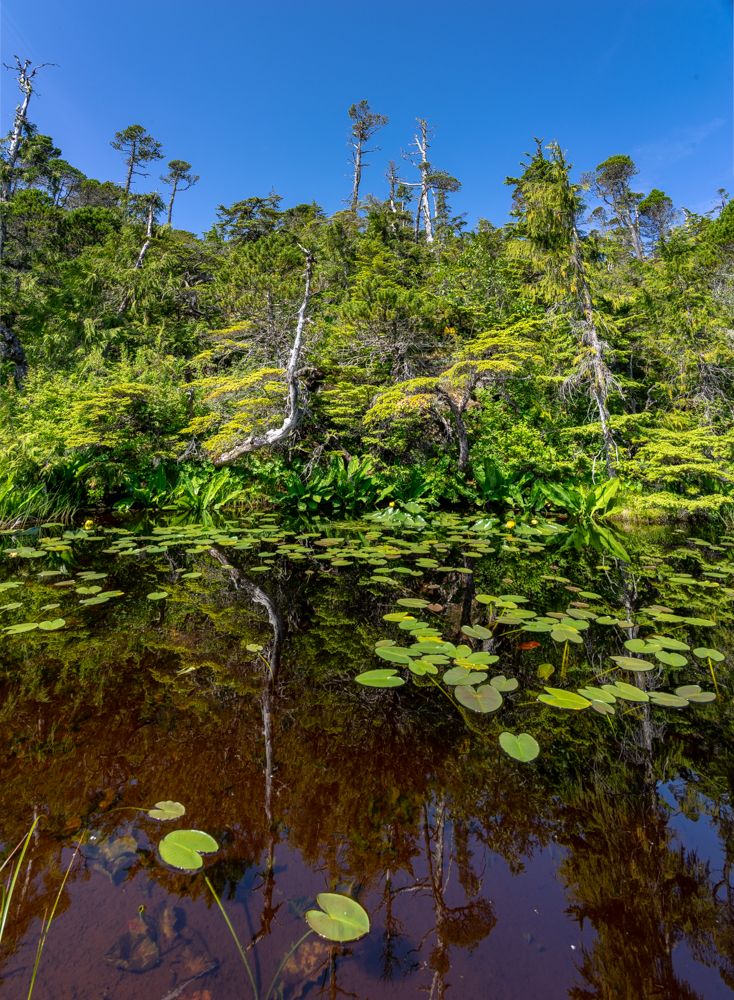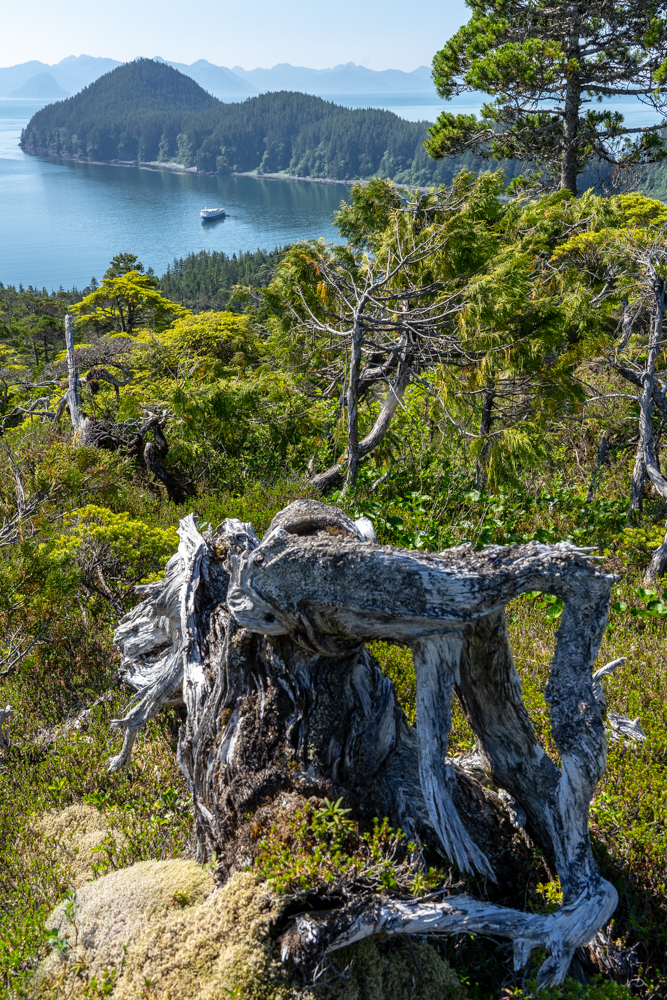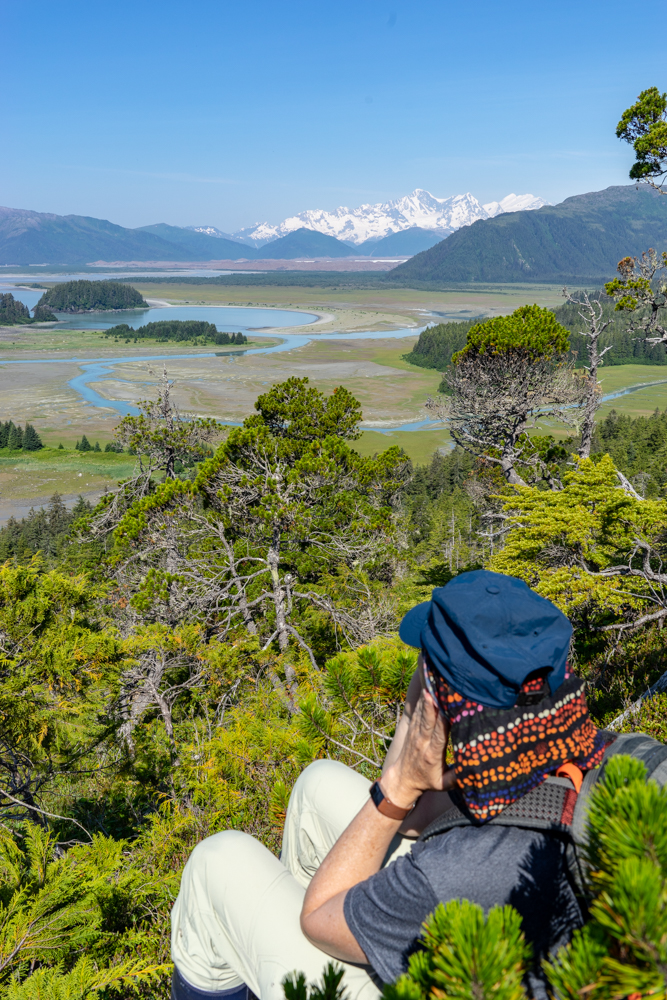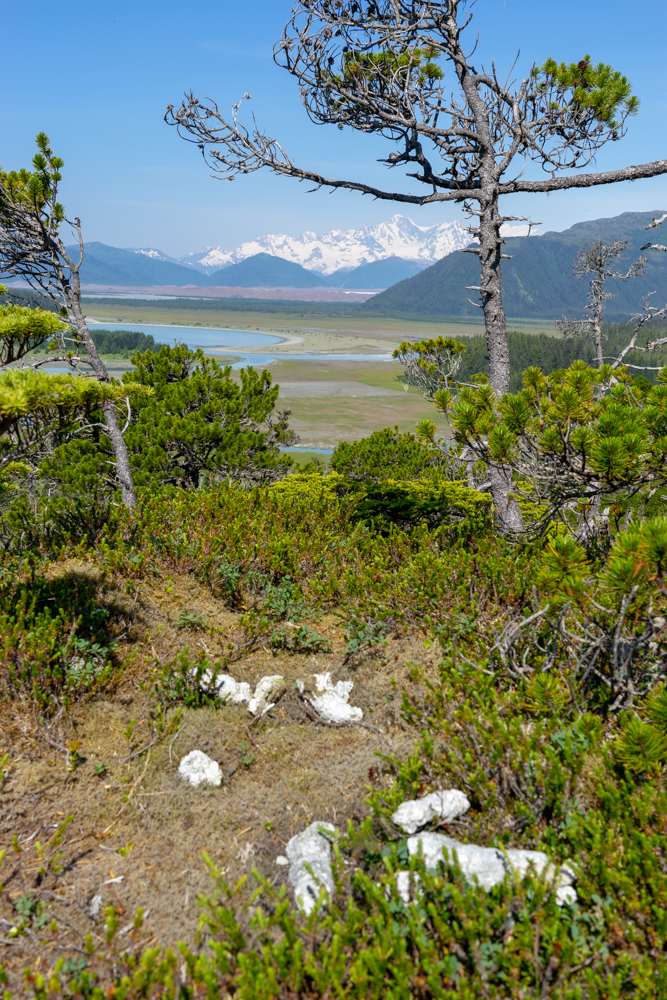Long before the cruise ships paraded up and down the Inside Passage of Southern Alaska, John Muir, founder of the Sierra Club and an early advocate for national parks, was seeking adventure, much like we were today. Alaska had been on our bucket list for many years but we agreed that our 50th birthday present was to escape to this ‘last frontier’.
While we may not be willing to follow Muir’s footsteps in a small canoe, we also did not want to join a ship larger than a major city full of poker machines and mobility scooters. So instead we opted for a unique small ship cruise for 7 nights exploring the little inlets and bays of this Alaskan Inside Passage wonderland.
Day 1 – Sitka Departure
Meeting late in the afternoon to board the ‘Wilderness Explorer’ with just 45 passengers on board, we settle in to our small, if not cosy cabin. Out little floating hotel for the week may not have all the bells and whistles of a large ship but the multiple kayaks off the stern of the boat were a good sign of the fun ahead. The personal nature of the ship was reinforced as we were introduced to each of the crew and guides– Ben (the leader) Christian, Kelly and identical twin sisters Megan and Sarah (who don’t normally work together but just happened to be on the same boat for our trip. Of course!). We also met Emily who would become a critical staff member keeping us suitable lubricated with any cocktail we could name. First nights dinner of sock eye salmon would be the first of a week of locally sourced seafood found in this part of the world.
As the ship slowly sneaked out of the harbour under grey skies heading for the Magoun Islands – a cluster of small rocky outcrops dotting in the Hayward Straight - the question if the weather gods would be on our side was the main topic of conversation into the night.
Day 2 – The Magoun Islands
The day started with an early morning gym session on the back deck. I know, I know - we are on holidays but the plan was to burn enough calories to justify the big breakfasts, lunches, desserts, afternoon teas, cocktail hour drinks and nibbles and three course meals we were planning to consume each day.
The big advantage of a small ship tour is that most of the day is spent either on the water or hiking the remote islands that dot the glacier bays. Jumping in a skiff we explore around the Islands to get acquainted with the land/seascape and what it has to offer.
The water is calm, but the clouds hinting of the misty rain that would start falling. We had been warned during our briefings to expect it to rain, and rain often. So the saying goes "if the barometer goes up it is going to rain, if the barometer goes down it is going to rain and if the barometer doesn’t change then its still probably going to rain". Sun is considered “cloud failure”. The other piece of useful advice we received was there is no such thing as bad weather, there is only being badly dressed for the weather. So, appropriately clad in raincoats, rainproof skirts on the kayaks, we happily hop into the kayaks and paddled around for a couple of hours.
Safely back aboard it was time for happy hour, just as the sun decided to bathe the islands in rays of golden light. As we sat on the outer deck enjoying the cocktails and warmth, a raft of sea otters similarly enjoying the rare Alaskan sun drifted past. But the otters were soon to be out done.
Each night we were entertained with an educational talk on the history, animals and plants of Alaska. Tonights talk was on the numerous bird species we would see from the bold “bald Eagle”, the multiple types of sandpipers and the small plump marbled murrelet. But the talk was soon interrupted with an important announcement from the Captain over the loud speaker - “Bear on the banks ahead”!
As the room emptied quicker than a fire evacuation we all rushed up to the bow as it nudged towards the bank. Ahead a large single brown bear (only the educated know that we don’t call them Grizzlies in Alaska) slowly grazing on the rushes on the waters edge. Not a bad way to start the trip!
Day 3 – Kalinin Bay
Leaving the Magoun Islands, we sliced our way through the Neva Straight to Kalinin Bay. Anchoring in the horseshoe shaped inlet we set off on an all-day hike across to Sea Lion cove which fronts directly onto the Pacific Ocean. Standard uniform for hiking anywhere in South West Alaska is the humble gumboot. The thought of a 6 mile (10 kilometre) hike in a pair of rubber boots is not for the feint hearted, but as the saying goes – when in Rome…About 2 meters into the walk we quickly realised, after sinking thigh deep in mud, that these all terrain go anywhere shoes are a must.
Tramping though the meadow we are soon brought to a halt with another bear in the distance - this time a brown bear and her cub. Turns out this mumma bear is the alpha bear in the region and shows little interest in us. Her cub seemed a little more disturbed as we made our way carefully past them on the other side of the meadow with the guides hand firmly gripped on the bear spray. A little further along the trail we startle a juvenile bear who luckily decides to run away from (and not towards) us. I am quickly growing an appreciation of being ‘Bear aware’ as we hike in these less visited parts of Alaska.
A fairly scrabbly bush walk follows, up and over a small mountain, to a high lake then dropping down to the beach. It reminds us a lot of a small version Wineglass Bay Tasmania, although the water temperature is 10 degrees colder than what we had thought were freezing temperatures in Tassie. Despite the cold, our guides and several fellow travellers brave the hypothermic temperatures to plunge into the Pacific Ocean. We opt for a leisurely stroll along the sand, the only other foot prints before ours, those of the local deers.
As we retrace our steps, we encounter yet another Brown Bear, this time far off in the meadow. This one is more inquisitive standing on his hind legs to check to who this strange creature is in his part of the forrest.
Cocktail hour was calling so we return to the boat to have a soak in the hot tub under the still sunny skies as we begin to cruise down the long Chatham Straight. Known by the locals as humpback highway, the Chatham Straight is a major route for Humpback Whales. It did not take long before the tell tales signs of water spouts gave an indication that we were not the only large mass in these waters. In John Muir’s words:
…a half dozen whales, their broad backs like glaciated bosses of granite heavily aloft in near view, sprouting lustily, drawing a long breath, and plunging down home.
What a way to end the day.
Day 4 – Bay of Pillars / Patterson Bay
After travelling all night, we awake to yet another sunny day this time in the Bay of Pillars. Jumping into kayaks we are soon joined by a dozen sea otters (Cats of the Ocean according to Kelly our guide because they eat, sleep and groom their way through the day). The otters appear as a brown head popping up out of the ocean and then a set of flippers about 3 – 5 foot away. Seeing brightly coloured kayaks is usually enough to send them to the bottom whilst we play a game of “lets guess where they will pop up again”.
Back to the boat for a short cruise to our next destination – Patterson Bay. Having gone kayaking in the morning, we decide not to do the 6 miles up the bay chasing the boat in a kayak and instead opt for a more leisurely skiff tour in search of more wildlife. That decision turned out to be both good and bad. Good as we got so see a harbour seal as well as another brown bear. And Bad – as Kathryn lost her brand new prescription sunglasses over the side of the skiff whilst taking pictures of the said seal. We were hoping the seal might be trained enough to go down and grab the glasses for us, but sadly no luck.
On our way up Patterson Bay we took the opportunity to jump up into the bridge where the captain, the second mate, the tour guide leader and a tour guide where all glued to binoculars trying to find signs of life on the steep cliffs. Specifically they were looking for wild mountain goats. It was quiet pleasing to know that even they mistake a rock or a patch of snow for a goat.
The surrounding mountains reflected like a mirror on the calm waters, only broken by the wake of the boat as we made our way up the Chatham Straight. Entering a narrow channel where it felt like you could stretch your arms out and touch the rock walls, we entered Red Bluff Bay. At the end of the Bay a beautiful two hundred foot high water fall cascaded directly into the Bay. With the cliffs descending vertically under the water the boat slowly nudges up to the front of the falls, its spray enveloping those standing on the bow of the boat.
Another unforgettable day in paradise.
Day 4 – Basket Bay / Iyoukeen Cove
Waking early to yet another gloriously sunny day – the likes of which the guides tell us they have rarely seen (at least not a run of sunny days joined together) – Kathryn sets off to the “gym” on the back of the boat again to work of last nights amazing desert. Just when you begin to question why you’re on a cross trainer early in the morning, a whale pops his head up just 10 foot off the side of the boat to greet you and follows for the next 30 mins or so, lazily making his way up the humpback highway.
Basket Bay is blessed with crystal clear waters like that of a large marine aquarium - with star fish, sea slugs and schools of small fish visible below. With such calm waters we quickly jump into the kayak to immerse ourselves in the fish tank. Paddling to what first appears to be little more than a small creek inlet, it soon expands into a marble grotto (or cave) cut through the rocks. We slowly paddle through the cave and re-emerge on the other side to a small waterfall, pausing to marvel at the work of nature in creating such beautiful landscapes.
The afternoon we briefly motor to another small bay called Iyoukeen Cove. The unique feature of this Cove is a shelly beach covered with small glaciated pebbles and rocks. Looking for a new type of adventure we opt for our first taste of a “bushwhack” – a walk into the forest (bear country mind you) without the nicety of a fixed path. You literally thrust yourself into the edge vegetation and then follow a bear (or deer) trail, whilst your guide is calling out “haaaaay-oup” to let the bears know you’re coming.
We finished the day in the spa sipping cocktails and our first peek of the mouth of Glacier Bay as the sun set.
Day 5 – Glacier Bay
Two hundred and fifty years ago Glacier Bay was not really a bay at all but a massive river of ice, 180 kilometres long and as tall the mountains around it. Since Vancouver discovered the massive Glacier whilst trying to find a safe passage through the mountains in 1794 the majority of the glacier has retreated, leaving behind less than a dozen small remaining tide water (ocean facing) glaciers.
We set out to cruise the sixty miles up the bay where a river of ice once held ground. Our first call over the loud speaker from the Glacier Bay National Park Ranger, who had joined us for the day, was that we were approaching Marble Island. This rocky outcrop is a favourite haunt for a large number of species of birds, including the Puffin and a boisterous colony of sea lions, snorting and grunting as they sunned themselves on the shoreline.
Travelling further up the Bay, several hump back whales joined us after their long journey from Mexico to feast on the nutrient rich waters and restock their blubber reserves after calving.
Reaching the head of the bay, the now infamous Grand Pacific Glacier and the Margerie Glacier, the most impressive of the ocean facing glaciers, towered above not only our small ship but even the largest twenty story high cruise liner.
Naturalist John Muir, who visited Glacier Bay 85 years after Vancouver had first explored the many inlets and glaciers that make Alaska’s south west coastline, found the Glacier receding as fast as a mile per year. Of the glaciers he wrote.
“An imposing array of jagged spires and pyramids and flat-topped towers of many shades of blue from pale shimmering limped tones in the crevasses and hollows to the most startling chilling almost shrieking vitriol blue on the plane mural spaces from which bergs had just been discharged”.
(Can you see the boats in the three pictures above?)
Making our return trip down the bay we slowly motor past goat mountain, looking for tiny white smudges camouflaged on the near vertical rock face. After watching the beautiful scenery and the occasional see otter, porpoise and harbour seal go past from the top deck I head for the bow of the boat to watch the afternoon sun (yes another rain free day) shimmer on the water.
In the distance a large black distinctive looking fin emerges from the water like the turret of a submarine. A whale definitely, but this was no ordinary whale. As we get closer the distinctive curled tip and black and white pattern on the body is a sure sign that we have witness the very first sighting of an Orca in the bay this summer.
Whilst Vancouver and Muir explored this land in the late 1700’s and early 1800’s the native Huna Tlinglet tribe had called this land home for hundreds of years before that. To gain some appreciation of this history we stop at Bartlett Cove to visit the Tribal House (Xunaa Shuka Hit), a recently constructed dedication to the of the importance of the native Huna Tlinglet connection to the waters and land of Glacier Bay.
Another fitting end to another unforgettable day.
Day 6 – Fern Habour
We spent our last day at Fern Harbour, another turquoise water inlet, home to many sea lions, otters and seals. The morning we don our rubber boots and set off on a second “bushwack” to get a real taste of what it would have been like for early explorers climbing the surrounding mountains through dense thickets of shrubs, trees and ground cover plants where no one has ventured before.
Several scratches, falls and clamours later we reach the high muskeg area overlooking the bay. Muskegs are boggy, peat-rich flat areas, with water lily-filled ponds, moss, lichen and insect catching sundew plants. Despite the warm 25 degree day - a scorching temperature for Alaska - the views from the top of the mountain are mesmerising with glaciers flowing like whipped cream in the valleys down to turquoise blue bays. Definitely worth the mud, sweat and scratches.
Our last activity for the day, and also the entire trip is a leisurely skip cruise following the rocky shoreline to say hello (and good-bye) to our watery friends.
While this could be followed by a relaxing soak in the hot tub, this is Alaska. As a result a few of us brave (or foolish) agree to take the “polar plunge” – this is where we decide it is a good idea to jump from the third level of the ship into the icy, freezing, cold, glacier fed waters (yes it was cold). What a way to remember this week.
John Muir is credited with changing the perception of Alaska from one of daunting cold to enchanting beauty. Following this amazing week journey along the Humpback Highway I hope to continue to follow Muir’s search for the beauty in this world:
“As long as I live, I'll hear waterfalls and birds and winds sing. I'll interpret the rocks, learn the language of flood, storm, and the avalanche. I'll acquaint myself with the glaciers and wild gardens, and get as near the heart of the world as I can".
― John Muir






